

12+ Essay Letter Writing – Format, Examples, Writing Tips
- Letter Writing
- March 4, 2024
- School Letters
Essay Letter Writing: Essay letter writing is a form of written communication that combines the structure and format of an essay with the personal tone and conversational style of a letter. This type of school letter writing can be used to express personal thoughts and opinions on a variety of topics, from social issues to academic assignments.
In essay letter writing, the writer has the freedom to share their ideas and experiences in a unique and creative way, while also adhering to the basic principles of essay writing, such as structure, coherence, and logical argumentation. This Essay Letter Writing is an effective way to communicate complex ideas in a clear and engaging manner.
Also Check: Formal Letter Format Class 8
Essay Letter Writing – Structure of Essay Letter Writing Tips
Content in this article
Essay letter writing follows a basic structure that combines the elements of an essay with the conversational tone of a Essay Letter Writing. Here is a general outline of the structure:
- Introduction : The first paragraph introduces the topic and purpose of the Essay Letter Writing. It should be engaging and clearly state the writer’s thesis or main point.
- Body Paragraphs : The body of the Essay Letter Writing should consist of two or three paragraphs that support the thesis with relevant evidence and examples. The paragraphs should be well-organized and flow logically from one point to the next.
- Conclusion : The final paragraph summarizes the writer’s main points and restates the thesis in a clear and concise manner. Essay Letter Writing should leave the reader with a lasting impression and a call to action.
Essay Letter Writing – Sample Format
Below is a sample format for essay letter writing. This format can be adapted based on the specific purpose and audience of your essay letter:
[Your Name] [Your Address] [City, State, ZIP Code] [Email Address] [Phone Number] [Date]
[Recipient’s Name] [Recipient’s Title or Relationship] [Company, School, or Institution Name] [Address] [City, State, ZIP Code]
Dear [Recipient’s Name],
Subject: [Briefly Mention the Topic of the Essay]
I trust this letter finds you in good health and high spirits. I am writing to share my thoughts on [mention the main topic or purpose of the essay]. As someone deeply passionate about this subject, I believe it is crucial to explore and articulate my perspectives on [provide a brief overview of the essay’s focus].
Introduction: In the introduction, I aim to captivate your attention by [mention how you plan to engage the reader, e.g., sharing a personal anecdote, posing a question, or presenting a relevant quote]. This introductory section sets the stage for a comprehensive exploration of [the main theme or idea].
Body Paragraphs: The body of the essay will delve into [three to four key points or ideas related to the main theme]. Each paragraph will explore a distinct aspect, supported by [examples, evidence, personal experiences, or relevant information]. This structured approach ensures a coherent and compelling presentation.
Conclusion: The concluding section will summarize the key findings and insights discussed throughout the essay. I aim to leave the reader with [a thought-provoking statement, a call to action, or a reflection on the broader implications of the topic].
I appreciate your time and consideration in reading my essay. I believe that [mention the potential impact or relevance of the essay] and look forward to any insights or feedback you may have.
Thank you for your attention.
[Your Full Name] [Your Title or Affiliation, if applicable] [Your Signature – if sending a physical letter]
Feel free to customize this template based on the specific topic, purpose, and recipient of your essay letter. Adjust the language, tone, and content to suit the nature of the essay and the preferences of your audience.
Essay-Letter Writing – Example
Here’s an example of Essay Letter Writing:
Dear [Recipient],
I am writing to share my recent experience with essay writing. As you may know, essay writing is a crucial skill that is required in many academic settings, including college and university courses.
Recently, I had to write an essay on the topic of climate change and its impact on the environment. At first, I found it challenging to organize my thoughts and ideas in a logical and coherent manner. However, with the help of some research and a lot of hard work, I was able to create a well-written essay that received a high grade.
Through this experience, I have learned that essay writing is not just about putting words on paper; it is about expressing ideas and arguments in a clear and persuasive manner. Additionally, I have realized that careful planning and organization are essential for producing a successful essay.
Overall, I am grateful for the opportunity to improve my essay writing skills and I hope to continue honing them in the future.
Sincerely, [Your Name]
Essay – Letter Writing – Example
Essay Letter Writing About Social Media
Here’s an Essay Letter Writing About Social Media
I am writing to share my thoughts on the topic of social media and its impact on our lives. In today’s world, social media has become an integral part of our daily routines, and it is hard to imagine life without it.
While social media has its advantages, such as staying connected with friends and family and accessing a wealth of information, it also has its drawbacks. One of the biggest issues with social media is the spread of misinformation and fake news. Many people tend to believe whatever they read online, without fact-checking or verifying the sources.
Furthermore, social media can also have negative effects on mental health. It is easy to fall into the trap of comparing ourselves to others and feeling inadequate, which can lead to anxiety and depression.
In my opinion, it is important to strike a balance when it comes to social media usage. We should be mindful of the information we consume and make sure it is accurate and reliable. Additionally, we should limit our time on social media and use it in moderation, so as not to let it consume our lives.
Thank you for taking the time to read my thoughts on this important topic.
Essay Letter Writing About Social Media
Essay Letter Writing for Students
Below is an Essay Letter Writing suitable for students:
[Recipient’s Name] [Recipient’s Title or Position] [School or Institution Name] [Address] [City, State, ZIP Code]
Subject: Exploring the Importance of Extracurricular Activities for Student Development
I hope this letter finds you in good health and high spirits. As a student at [Your School/College Name], I am writing to share my thoughts on the significance of participating in extracurricular activities for overall student development.
Introduction: In today’s dynamic educational landscape, the role of extracurricular activities goes beyond the traditional classroom setting. These activities encompass a wide range of opportunities for students to explore their interests, develop essential skills, and foster a well-rounded personality.
Body: Paragraph 1: Broadening Horizons Engaging in extracurricular activities exposes students to diverse fields beyond their academic curriculum. It provides a platform to discover and explore various interests, allowing students to broaden their horizons and gain a more comprehensive understanding of the world.
Paragraph 2: Skill Development Participating in clubs, sports, or cultural activities enhances the development of crucial life skills. Teamwork, leadership, time management, and communication are just a few examples of skills that students can acquire through active involvement in extracurricular pursuits. These skills are not only valuable during the school years but also play a pivotal role in shaping a successful future.
Paragraph 3: Building Character Extracurricular activities contribute significantly to character building. Students learn to overcome challenges, face competition, and cope with both success and failure. These experiences foster resilience, perseverance, and a strong sense of responsibility, qualities that are integral to personal growth.
Paragraph 4: Holistic Development The combination of academic excellence and active participation in extracurricular activities leads to holistic development. Students who strike a balance between their studies and interests tend to perform well academically while also developing a more well-rounded and adaptable personality.
Conclusion: In conclusion, I firmly believe that encouraging students to engage in extracurricular activities is crucial for their holistic development. These activities not only complement academic learning but also nurture qualities that are essential for success in the ever-evolving global landscape.
I look forward to discussing this topic further and exploring ways to promote and support extracurricular involvement among students at [Your School/College Name]. Thank you for your time and consideration.
[Your Full Name] [Your Grade/Class] [Your Signature – if sending a physical letter]
Feel free to customize this letter based on your specific thoughts, experiences, and the requirements of your essay assignment.
Writing an Essay in Letter Form
Writing an essay in letter form involves combining the structure of a formal or informal letter with the content and structure of an essay. Here is a sample essay in letter form:
[Recipient’s Name] [Recipient’s Title or Position] [Organization or Institution Name] [Address] [City, State, ZIP Code]
Subject: Exploring the Impact of Technology on Education
I trust this letter finds you well. As a concerned student passionate about the role of technology in education, I am writing to share my insights on how technological advancements are shaping the learning landscape.
Introduction: Technology has become an integral part of our lives, and its influence on education is undeniable. In this letter, I aim to examine the positive and negative impacts of technology on the educational experience, shedding light on its transformative effects.
Paragraph 1: Positive Impacts One of the notable positive impacts of technology on education is the accessibility of information. The internet has opened up vast repositories of knowledge, making learning resources readily available to students worldwide. This accessibility has democratized education, breaking down barriers to information.
Paragraph 2: Interactive Learning Furthermore, technology has revolutionized the way we learn. Interactive tools, simulations, and virtual classrooms create an engaging and dynamic learning environment. These tools not only cater to diverse learning styles but also foster critical thinking and problem-solving skills.
Paragraph 3: Global Connectivity The interconnected world facilitated by technology allows students to connect with peers and experts globally. Collaborative projects, online forums, and virtual exchange programs contribute to a richer and more diverse educational experience.
Paragraph 4: Challenges and Concerns However, with the benefits come challenges. The digital divide, unequal access to technology, and concerns about privacy and online security are critical issues that need addressing. Balancing the integration of technology while ensuring equitable opportunities for all students is a pressing concern.
Conclusion: In conclusion, the impact of technology on education is profound and multifaceted. While it presents exciting opportunities for enhanced learning, we must address the challenges to create an inclusive educational landscape that benefits all.
I welcome the opportunity to discuss these ideas further and explore strategies for leveraging technology responsibly in education. Thank you for considering my perspective.
Feel free to customize this template based on your specific topic and the guidelines provided for your assignment. Adjust the tone, style, and content to suit the nature of your essay and your audience.
Essay Letter Writing Template
Below is a template that you can use for essay letter writing. This template is a general structure; you can customize it based on the specific topic or purpose of your essay.
[Your Name] [Your Address] [City, State, ZIP Code] [Email Address] [Date]
Introduction: Begin your letter with a brief introduction. Clearly state the purpose of your letter and provide a hook to engage the reader’s interest.
Body Paragraphs: Divide the body of your letter into paragraphs, each addressing a specific point or idea related to your essay topic.
- Introduce the topic of your essay.
- Provide background information to set the context.
- Clearly state your thesis or the main point you will be discussing.
- Introduce and discuss the first supporting point.
- Provide evidence, examples, or facts to strengthen your argument.
- Explain the relevance of this point to your overall argument.
- Introduce and discuss the second supporting point.
- Provide evidence, examples, or facts to support this point.
- Explain how this point connects to your thesis.
- Acknowledge potential counterarguments.
- Refute or address counterarguments, demonstrating the strength of your position.
- Summarize the key points discussed in your essay.
- Reinforce the importance of your thesis.
- Provide a smooth transition to the conclusion.
Conclusion: Conclude your letter by summarizing the main points and restating the significance of your topic or argument. End with a call to action, a thought-provoking statement, or a question to leave a lasting impression.
Closing: End your letter with a formal closing. Choose a closing phrase that matches the tone and purpose of your essay.
[Your Full Name] [Your Signature – if sending a physical letter]
Feel free to adapt this template of Essay Letter Writing based on the specific requirements of your essay or the guidelines provided for your assignment. Adjust the tone, style, and content to suit the nature of your essay and your audience.
Formal Essay Letter Writing
When writing an Essay Letter Writing in Formal tone, you want to maintain a professional tone while effectively conveying your thoughts. Below is a formal Essay Letter Writing:
Subject: An Examination of Environmental Sustainability Practices in [Organization/Institution Name]
I trust this letter finds you in good health. As a dedicated student of [Your School/College Name], I am writing to bring attention to the importance of adopting sustainable practices within our institution, specifically in the context of environmental conservation.
Introduction: Environmental sustainability is an issue of global concern, and its implications resonate across various sectors, including education. In this letter, I aim to shed light on the benefits of implementing eco-friendly initiatives within [Organization/Institution Name] and the positive impact it can have on our community and beyond.
Paragraph 1: The Need for Environmental Sustainability The pressing need for environmental sustainability arises from the escalating challenges posed by climate change. By incorporating sustainable practices within our institution, we contribute to the global effort to mitigate the adverse effects of environmental degradation.
Paragraph 2: Implementing Green Initiatives I propose the implementation of green initiatives, such as waste reduction, energy conservation, and the incorporation of renewable energy sources. These initiatives not only align with global sustainability goals but also instill a sense of environmental responsibility among students, faculty, and staff.
Paragraph 3: Educational Opportunities Furthermore, embracing environmental sustainability provides unique educational opportunities. By incorporating sustainable practices into our curriculum, we equip students with the knowledge and skills needed to address complex environmental issues in their future endeavors.
Conclusion: In conclusion, the integration of environmental sustainability practices within [Organization/Institution Name] is not only a responsibility we owe to the planet but also an opportunity to foster a culture of environmental stewardship among the members of our institution.
I welcome the opportunity to discuss these proposals further and explore feasible ways to initiate and support sustainable practices within our institution. Thank you for considering these recommendations.
Feel free to adapt this formal Essay Letter Writing based on the specific topic and guidelines provided for your assignment. Ensure that the tone remains formal and that the content aligns with the expectations of a formal letter.
Job Application Essay Letter Writing
Below is a job application Essay Letter Writing that you can use as a reference:
[Employer’s Name] [Company Name] [Company Address] [City, State, ZIP Code]
Dear [Employer’s Name],
Subject: Application for [Job Position] – [Your Full Name]
I am writing to express my sincere interest in the [Job Position] advertised on your company’s website. With a strong background in [Relevant Skills or Experience], I am confident in my ability to contribute effectively to your team and the success of [Company Name].
Introduction: In my current role at [Your Current Company], I have successfully [highlight a significant accomplishment or responsibility related to the job]. This experience has equipped me with [mention specific skills or qualities] that align with the requirements of the [Job Position] at [Company Name].
Body: Paragraph 1: Why I am a Strong Candidate I am particularly drawn to [Company Name] due to its commitment to [mention any specific values, projects, or achievements of the company]. My [mention number of years] years of experience in [Your Industry or Field] have honed my ability to [mention key responsibilities or skills relevant to the job].
Paragraph 2: Key Skills and Achievements I possess a proven track record in [mention relevant skills or achievements], as evidenced by [provide specific examples or metrics]. These experiences have sharpened my [mention soft skills] and my ability to [mention any other relevant strengths].
Paragraph 3: Why I Want to Join [Company Name] I am attracted to [Company Name] because of its reputation for [mention any specific aspects of the company culture, projects, or values that resonate with you]. I am eager to contribute my skills and learn from the talented team at [Company Name].
Conclusion: In conclusion, I am excited about the opportunity to contribute to [Company Name] and am confident in my ability to excel in the [Job Position]. I look forward to the possibility of discussing how my skills and experiences align with your company’s needs in further detail.
Thank you for considering my application. I am eager to further discuss how my qualifications make me a strong fit for this position.
Feel free to customize this Essay Letter Writing for job application based on your specific experiences, skills, and the requirements of the job you are applying for.
Essay Letter Writing for Different Audiences
Essay Letter Writing for different audiences involves tailoring your content, tone, and approach based on the specific group you are addressing. Below are examples of Essay Letter Writing for different audiences:
1. Essay Letter Writing to Parents – Topic: Importance of Extracurricular Activities for Student Development
[Your Name] [Your Grade/Class] [Date]
[Parents’ Names] [Parents’ Address]
Dear Mom and Dad,
I hope this letter finds you both well. As your son/daughter and a student at [Your School], I wanted to share my thoughts on the significance of participating in extracurricular activities for overall student development.
[Continue with the body of the essay, discussing benefits, personal experiences, and the impact on academic and personal growth.]
2. Essay Letter Writing to Teachers – Topic: The Role of Technology in Enhancing Classroom Learning
[Teacher’s Name] [School Name]
Dear [Teacher’s Name],
I trust this letter finds you well. As a student in your [Subject] class, I would like to explore the impact of technology on classroom learning and how it can enhance the educational experience for both students and teachers.
[Continue with the body of the essay, discussing positive impacts, examples, and potential challenges.]
3. Essay Letter Writing to Friends – Topic: The Benefits of Reading for Personal Growth
[Your Name] [Date]
[Friends’ Names]
Dear Friends,
I hope you’re doing great. Recently, I’ve been reflecting on the many benefits of reading and how it contributes to personal growth. I thought I’d share my thoughts with you.
[Continue with the body of the essay, discussing the joys of reading, cognitive benefits, and the impact on personal development.]
[Your Full Name]
4. Essay Letter Writing to the Editor – Topic: Addressing Environmental Concerns in Our Community
[Your Name] [Your Address] [City, State, ZIP Code] [Date]
[Editor’s Name] [Newspaper/Magazine Name] [Address]
Dear Editor,
I am writing to bring attention to the environmental concerns in our community, specifically focusing on [specific issue]. It is imperative that we address these issues to ensure a sustainable future.
[Continue with the body of the essay, providing information, possible solutions, and urging community involvement.]
[Your Full Name] [Your Contact Information]
Feel free to customize these letters of Essay Letter Writing for different audiences based on the specific audience and topic you are addressing. Adjust the language, tone, and content to suit the relationship and communication style appropriate for each audience.
Essay Letter Writing About Pollution – Email Format
Here’s an Email Format of Essay Letter Writing about Pollution:
I am writing to you today to express my deep concern about the issue of pollution. In recent years, pollution has become a major problem that is affecting our environment, our health, and our future. It is a global issue that needs to be addressed urgently.
Pollution is caused by various factors, including industrial activities, transportation, and waste disposal. The consequences of pollution are dire, including climate change, respiratory problems, and biodiversity loss. It is important that we take action to reduce our carbon footprint, recycle waste materials, and limit the use of harmful chemicals.
As citizens of this planet, we all have a responsibility to protect our environment and reduce pollution. I urge you to join me in taking action to reduce pollution in our daily lives. We can start by using public transportation, conserving energy, and practicing responsible waste disposal.
Let’s work together to create a healthier and more sustainable future for ourselves and generations to come.
Essay Letter Writing for Various Occasions
Essay Letter Writing for various occasions involves tailoring your content to the specific event or celebration. Below are examples of Essay Letter Writing for different occasions:
1. Essay Letter Writing for Graduation – Reflecting on the Journey
[Your Name] [Graduation Date]
[Principal’s Name] [School Name]
Dear Principal [Principal’s Last Name],
As I stand on the threshold of a new chapter in my life, I find myself reflecting on the incredible journey that has led me to this moment. Graduation is not just a culmination of academic achievements, but a celebration of growth, resilience, and the bonds formed in these hallowed halls.
[Continue with the body of the essay, reflecting on memorable experiences, friendships, and the lessons learned during the academic journey.]
[Your Full Name] [Your Graduation Class]
2. Essay Letter Writing for Thanksgiving – Gratitude for Family and Friends
[Recipient’s Name] [Recipient’s Address]
As Thanksgiving approaches, I find myself overwhelmed with gratitude for the blessings in my life, particularly the cherished relationships with family and friends. In the spirit of thankfulness, I wanted to take a moment to express my heartfelt appreciation for the impact you have had on my life.
[Continue with the body of the essay, expressing specific reasons for gratitude, fond memories, and the significance of the relationship.]
Warm regards,
3. Essay Letter Writing for a Birthday Celebration – Reflecting on Another Year
[Your Name] [Birthday Date]
[Recipient’s Name]
As I celebrate another year of life, I am prompted to reflect on the experiences, growth, and joys that this journey has brought. Birthdays are not just a marker of passing time; they are a celebration of the lessons learned, the relationships cherished, and the memories created.
[Continue with the body of the essay, reflecting on the past year, expressing gratitude, and sharing hopes for the future.]
Cheers to another year,
4. Essay Letter Writing for New Year’s Resolutions – Setting Intentions for the Year Ahead
As the New Year approaches, it offers a fresh canvas on which to paint the aspirations, goals, and intentions for the coming months. In the spirit of new beginnings, I wanted to share my reflections on the year gone by and outline the resolutions that will guide my path in the year ahead.
[Continue with the body of the essay, reflecting on achievements and challenges of the past year, and outlining specific resolutions.]
Wishing you a wonderful New Year,
Feel free to customize these letters of Essay Letter Writing in different occasions based on the specific occasion and your personal sentiments. Adjust the language, tone, and content to suit the nature of the event or celebration.
College Admission Essay Letter Writing
Writing a college admission Essay Letter Writing is an important step in the application process. Below is a sample college admission essay letter:
[College Admissions Office] [College/University Name] [College/University Address] [City, State, ZIP Code]
Dear Admissions Committee,
I am writing to express my sincere interest in joining the [College/University Name] community as a [Your Intended Major] major. As a passionate and dedicated student, I am eager to contribute to and benefit from the academic environment and unique opportunities offered by your esteemed institution.
Introduction: Ever since I attended [Your High School Name], I have been inspired by the pursuit of knowledge and a desire to make a positive impact on the world. [Provide a brief introduction to your academic background and interests.]
Why [College/University Name]? [College/University Name] stands out to me as the ideal place to further my academic journey due to [mention specific reasons such as renowned faculty, exceptional programs, unique resources, or a particular campus culture]. The [Your Intended Major] program, in particular, aligns perfectly with my academic and career aspirations.
Unique Qualities and Achievements: Throughout high school, I have consistently demonstrated my commitment to excellence in [mention specific academic or extracurricular achievements]. These experiences have not only shaped my character but have also prepared me for the challenges and opportunities that a rigorous academic environment like [College/University Name] provides.
Contributions to Campus Life: I am excited about the prospect of contributing to the vibrant campus life at [College/University Name]. My experiences in [mention relevant extracurricular activities or community service] have instilled in me a sense of leadership, teamwork, and social responsibility.
Personal Growth and Goals: Beyond academics, I see [College/University Name] as a platform for personal growth and exploration. I am eager to immerse myself in the diverse learning experiences, engage with a community of like-minded individuals, and broaden my perspectives.
Conclusion: In conclusion, I believe that my passion for [Your Intended Major], commitment to academic excellence, and dedication to contributing positively to campus life make me a strong candidate for admission to [College/University Name]. I am excited about the prospect of becoming a valuable member of your community and contributing to the rich tapestry of experiences at [College/University Name].
Thank you for considering my application. I look forward to the opportunity to contribute to and benefit from the vibrant academic environment at [College/University Name].
[Your Full Name] [Your High School Graduation Year] [Your Signature – if sending a physical letter]
Feel free to customize this letter based on your specific experiences, aspirations, and the requirements of the college or university you are applying to. It’s important to convey your unique qualities, achievements, and reasons for choosing the institution.
FAQS for Essay Letter Writing – Format, Examples, Writing Tips
What is the basic format for an essay letter writing.
The basic format of Essay Letter Writing includes a salutation, introduction, body paragraphs, and a conclusion. Include your contact information, date, and a closing signature. The structure may vary depending on the type of letter and audience.
How do I start an essay letter?
Start with a salutation addressing the recipient. In the introduction, engage the reader with a compelling hook, such as a question, quote, or personal anecdote, to draw them into your essay.
What should I include in the body paragraphs of an essay letter?
Each body paragraph should focus on a specific point or idea related to your topic. Include supporting evidence, examples, or personal experiences to strengthen your arguments or convey your message effectively.
How do I end an essay letter?
Conclude your essay letter by summarizing key points, reiterating the main message, or providing a call to action. End with a closing statement that leaves a lasting impression on the reader.
Can you provide examples of Essay Letter Writing for different purposes?
Certainly! Essay Letter Writing Examples include job application essay letters, college admission essay letters, letters to friends on specific topics, and letters addressing various occasions. Tailor the content based on the purpose and audience.
Essay Letter Writing is an important skill that has been around for centuries. It serves as a means of communication and expression of ideas and emotions. With the advancement of technology, letter writing has evolved, but its importance has not diminished. Whether it is a formal business letter or a personal letter to a friend, the art of letter writing requires attention to detail, clear communication, and an understanding of the audience.
Related Posts
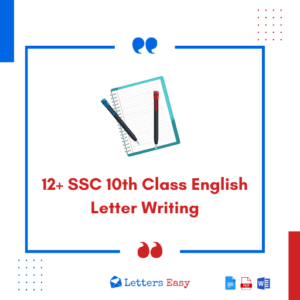
12+ SSC 10th Class English Letter Writing Format, Tips, Examples
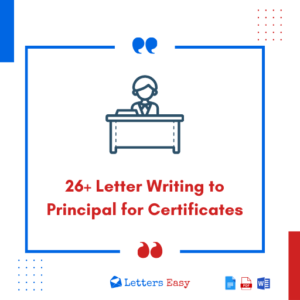
26+ Letter Writing to Principal for Certificates – Format & Samples

20+ Letter Writing in English for Class 6 – Examples, Tips, Topics

10+ Samples for Write a Letter to your Principal for 3 Days Leave

25+ Undertaking Letter Format for Students – Tips, Examples

30+ Sick Leave Letter to Class Teacher from Parents – Templates
Leave a reply cancel reply.
Your email address will not be published. Required fields are marked *
Name *
Email *
Add Comment
Save my name, email, and website in this browser for the next time I comment.
Post Comment
Purdue Online Writing Lab Purdue OWL® College of Liberal Arts
Essay Writing

Welcome to the Purdue OWL
This page is brought to you by the OWL at Purdue University. When printing this page, you must include the entire legal notice.
Copyright ©1995-2018 by The Writing Lab & The OWL at Purdue and Purdue University. All rights reserved. This material may not be published, reproduced, broadcast, rewritten, or redistributed without permission. Use of this site constitutes acceptance of our terms and conditions of fair use.
This resource begins with a general description of essay writing and moves to a discussion of common essay genres students may encounter across the curriculum. The four genres of essays (description, narration, exposition, and argumentation) are common paper assignments you may encounter in your writing classes. Although these genres, also known as the modes of discourse, have been criticized by some composition scholars, the Purdue OWL recognizes the wide spread use of these genres and students’ need to understand and produce these types of essays. We hope these resources will help.
The essay is a commonly assigned form of writing that every student will encounter while in academia. Therefore, it is wise for the student to become capable and comfortable with this type of writing early on in her training.
Essays can be a rewarding and challenging type of writing and are often assigned either to be done in class, which requires previous planning and practice (and a bit of creativity) on the part of the student, or as homework, which likewise demands a certain amount of preparation. Many poorly crafted essays have been produced on account of a lack of preparation and confidence. However, students can avoid the discomfort often associated with essay writing by understanding some common genres.
Before delving into its various genres, let’s begin with a basic definition of the essay.
What is an essay?
Though the word essay has come to be understood as a type of writing in Modern English, its origins provide us with some useful insights. The word comes into the English language through the French influence on Middle English; tracing it back further, we find that the French form of the word comes from the Latin verb exigere , which means "to examine, test, or (literally) to drive out." Through the excavation of this ancient word, we are able to unearth the essence of the academic essay: to encourage students to test or examine their ideas concerning a particular topic.
Essays are shorter pieces of writing that often require the student to hone a number of skills such as close reading, analysis, comparison and contrast, persuasion, conciseness, clarity, and exposition. As is evidenced by this list of attributes, there is much to be gained by the student who strives to succeed at essay writing.
The purpose of an essay is to encourage students to develop ideas and concepts in their writing with the direction of little more than their own thoughts (it may be helpful to view the essay as the converse of a research paper). Therefore, essays are (by nature) concise and require clarity in purpose and direction. This means that there is no room for the student’s thoughts to wander or stray from his or her purpose; the writing must be deliberate and interesting.
This handout should help students become familiar and comfortable with the process of essay composition through the introduction of some common essay genres.
This handout includes a brief introduction to the following genres of essay writing:
- Expository essays
- Descriptive essays
- Narrative essays
- Argumentative (Persuasive) essays
Academic Editing and Proofreading
- Tips to Self-Edit Your Dissertation
- Guide to Essay Editing: Methods, Tips, & Examples
- Journal Article Proofreading: Process, Cost, & Checklist
- The A–Z of Dissertation Editing: Standard Rates & Involved Steps
- Research Paper Editing | Guide to a Perfect Research Paper
- Dissertation Proofreading | Definition & Standard Rates
- Thesis Proofreading | Definition, Importance & Standard Pricing
- Research Paper Proofreading | Definition, Significance & Standard Rates
- Essay Proofreading | Options, Cost & Checklist
- Top 10 Paper Editing Services of 2024 (Costs & Features)
- Top 10 Essay Checkers in 2024 (Free & Paid)
- Top 10 AI Proofreaders to Perfect Your Writing in 2024
- Top 10 English Correctors to Perfect Your Text in 2024
- Top 10 Essay Editing Services of 2024
- 10 Advanced AI Text Editors to Transform Writing in 2024
Academic Research
- Research Paper Outline: Templates & Examples
- How to Write a Research Paper: A Step-by-Step Guide
- How to Write a Lab Report: Examples from Academic Editors
- Research Methodology Guide: Writing Tips, Types, & Examples
- The 10 Best Essential Resources for Academic Research
- 100+ Useful ChatGPT Prompts for Thesis Writing in 2024
- Best ChatGPT Prompts for Academic Writing (100+ Prompts!)
- Sampling Methods Guide: Types, Strategies, and Examples
- Independent vs. Dependent Variables | Meaning & Examples
Academic Writing & Publishing
- Difference Between Paper Editing and Peer Review
- What are the different types of peer review?
- How to deal with rejection from a journal?
- Editing and Proofreading Academic Papers: A Short Guide
- How to Carry Out Secondary Research
- The Results Section of a Dissertation
- Checklist: Is my Article Ready for Submitting to Journals?
- Types of Research Articles to Boost Your Research Profile
- 8 Types of Peer Review Processes You Should Know
- The Ethics of Academic Research
- How does LaTeX based proofreading work?
- How to Improve Your Scientific Writing: A Short Guide
- Chicago Title, Cover Page & Body | Paper Format Guidelines
- How to Write a Thesis Statement: Examples & Tips
- Chicago Style Citation: Quick Guide & Examples
- The A-Z Of Publishing Your Article in A Journal
- What is Journal Article Editing? 3 Reasons You Need It
- 5 Powerful Personal Statement Examples (Template Included)
- Complete Guide to MLA Format (9th Edition)
- How to Cite a Book in APA Style | Format & Examples
- How to Start a Research Paper | Step-by-step Guide
- APA Citations Made Easy with Our Concise Guide for 2024
- A Step-by-Step Guide to APA Formatting Style (7th Edition)
- Top 10 Online Dissertation Editing Services of 2024
- Academic Writing in 2024: 5 Key Dos & Don’ts + Examples
- What Are the Standard Book Sizes for Publishing Your Book?
- MLA Works Cited Page: Quick Tips & Examples
- 2024’s Top 10 Thesis Statement Generators (Free Included!)
- Top 10 Title Page Generators for Students in 2024
- What Is an Open Access Journal? 10 Myths Busted!
- Primary vs. Secondary Sources: Definition, Types & Examples
- How To Write a College Admissions Essay That Stands Out
- How to Write a Dissertation & Thesis Conclusion (+ Examples)
- APA Journal Citation: 7 Types, In-Text Rules, & Examples
- What Is Predatory Publishing and How to Avoid It!
- What Is Plagiarism? Meaning, Types & Examples
- How to Write a Strong Dissertation & Thesis Introduction
- How to Cite a Book in MLA Format (9th Edition)
- How to Cite a Website in MLA Format | 9th Edition Rules
- 10 Best AI Conclusion Generators (Features & Pricing)
- Top 10 Academic Editing Services of 2024 [with Pricing]
- Additional Resources
- Plagiarism: How to avoid it in your thesis?
- Final Submission Checklist | Dissertation & Thesis
- 7 Useful MS Word Formatting Tips for Dissertation Writing
- How to Write a MEAL Paragraph: Writing Plan Explained in Detail
- Em Dash vs. En Dash vs. Hyphen: When to Use Which
- The 10 Best Citation Generators in 2024 | Free & Paid Plans!
- 2024’s Top 10 Self-Help Books for Better Living
- The 10 Best Free Character and Word Counters of 2024
- Citation and Referencing
- Citing References: APA, MLA, and Chicago
- How to Cite Sources in the MLA Format
- MLA Citation Examples: Cite Essays, Websites, Movies & More
- Citations and References: What Are They and Why They Matter
- APA Headings & Subheadings | Formatting Guidelines & Examples
- Formatting an APA Reference Page | Template & Examples
- Research Paper Format: APA, MLA, & Chicago Style
- How to Create an MLA Title Page | Format, Steps, & Examples
- How to Create an MLA Header | Format Guidelines & Examples
- MLA Annotated Bibliography | Guidelines and Examples
- APA Website Citation (7th Edition) Guide | Format & Examples
- APA Citation Examples: The Bible, TED Talk, PPT & More
- APA Header Format: 5 Steps & Running Head Examples
- APA Title Page Format Simplified | Examples + Free Template
- How to Write an Abstract in MLA Format: Tips & Examples
- 10 Best Free Plagiarism Checkers of 2024 [100% Free Tools]
- 5 Reasons to Cite Your Sources Properly | Avoid Plagiarism!
- Dissertation Writing Guide
- Writing a Dissertation Proposal
- The Acknowledgments Section of a Dissertation
- The Table of Contents Page of a Dissertation
- The Introduction Chapter of a Dissertation
- The Literature Review of a Dissertation
- The Only Dissertation Toolkit You’ll Ever Need!
- 5 Thesis Writing Tips for Master Procrastinators
- How to Write a Dissertation | 5 Tips from Academic Editors
- The 5 Things to Look for in a Dissertation Editing Service
- Top 10 Dissertation Editing & Proofreading Services
- Why is it important to add references to your thesis?
- Thesis Editing | Definition, Scope & Standard Rates
- Expert Formatting Tips on MS Word for Dissertations
- A 7-Step Guide on How to Choose a Dissertation Topic
- 350 Best Dissertation Topic Ideas for All Streams in 2024
- A Guide on How to Write an Abstract for a Research Paper
- Dissertation Defense: What to Expect and How to Prepare
- Creating a Dissertation Title Page (Examples & Templates)
- Essay Writing Guide
- Essential Research Tips for Essay Writing
- What Is a Mind Map? Free Mind Map Templates & Examples
- How to Write an Essay Outline: 5 Examples & Free Template
- How to Write an Essay Header: MLA and APA Essay Headers
- What Is an Essay? Structure, Parts, and Types
How to Write an Essay in 8 Simple Steps (Examples Included)
- 8 Types of Essays | Quick Summary with Examples
- Expository Essays | Step-by-Step Manual with Examples
- Narrative Essay | Step-by-Step Guide with Examples
- How to Write an Argumentative Essay (Examples Included)
- Guide to a Perfect Descriptive Essay [Examples & Outline Included]
- How to Start an Essay: 4 Introduction Paragraph Examples
- How to Write a Conclusion for an Essay (Examples Included!)
- How to Write an Impactful Personal Statement (Examples Included)
- Literary Analysis Essay: 5 Steps to a Perfect Assignment
- Compare and Contrast Essay | Quick Guide with Examples
- Top 10 Essay Writing Tools in 2024 | Plan, Write, Get Feedback
- Top AI Essay Writers in 2024: 10 Must-Haves
- 100 Best College Essay Topics & How to Pick the Perfect One!
- College Essay Format: Tips, Examples, and Free Template
- Structure of an Essay: 5 Tips to Write an Outstanding Essay
Still have questions? Leave a comment
Add Comment
Checklist: Dissertation Proposal
Enter your email id to get the downloadable right in your inbox!
Examples: Edited Papers
Need editing and proofreading services.

- Tags: Academic Writing , Essay , Essay Writing
Knowing how to write an essay can help you out significantly in both, your academic and professional life. An essay is a highly versatile nonfiction piece of writing that not only tests your knowledge of a topic but also your literary and argumentative skills.
Each essay requires the same basic process of planning, writing, and editing. Naturally, we’ve used these stages to group our steps on how to write an essay. So w ithout further ado, let’s get into it! Here are the eight steps to write an essay:
Stage 1: Planning
1. Pick an appropriate research topic
In certain cases, your teacher or professor may assign you a topic. However, in many cases, students have the freedom to select a topic of their choice. Make sure you choose a topic that you’re well versed in and have significant knowledge of.
Having prior knowledge of the topic will help you determine the subsequent steps to write an essay. It will also make your research process considerably easier.
2. Form an appropriate thesis statement
A thesis statement is the central idea or premise your essay is based on. It is usually a sentence or two long and is included in the introduction of the essay. The scope of your thesis statement depends on the type of your essay and its length.
For instance, the scope of the thesis statement for a 500–1000 word school essay will be narrower than a 1000–5000 word college essay. A rule of thumb is that your essay topic should be broad enough to gather enough information, but narrow enough to address specific points and not be vague. Here’s an example:
The invention of the airplane by the Wright Brothers in 1903 revolutionized transportation and paved the way for modern aviation. It represents a monumental achievement in human history that forever changed the course of human civilization.
3. Create an essay outline
Creating a well-organized essay outline not only gives structure and flow to your essay but also makes it more impactful and easy to understand. The idea is to collect the main points of information that support or elaborate on your thesis statement. You can also include references or examples under these main points.
For example, if your thesis statement revolves around the invention of the airplane, your main points will include travel before the invention of the airplane, how it was invented, and its effects on modern-day travel. Take a look:
The Wright Brothers’ invention had a massive impact on modern-day travel. The subsequent growth of the aviation industry led to increased accessibility of air travel to the general public.
Stage 2: Writing
4. Write a comprehensive introduction
After creating the basic outline, it is important to know how to write an essay. Begin your essay by introducing your voice and point of view to the reader. An introduction is usually a paragraph or two long and consists of three main parts:
- Background information
- Thesis statement
Let’s better understand this with the help of an example:
The Wright Brothers’ invention of the airplane in 1903 revolutionized the way humans travel and explore the world. Prior to this invention, transportation relied on trains, boats, and cars, which limited the distance and speed of travel. However, the airplane made air travel a reality, allowing people to reach far-off destinations in mere hours. This breakthrough paved the way for modern-day air travel, transforming the world into a smaller, more connected place. In this essay, we will explore the impact of the Wright Brothers’ invention on modern-day travel, including the growth of the aviation industry, increased accessibility of air travel to the general public, and the economic and cultural benefits of air travel.
Let’s understand how to construct each of these sections in more detail.
A. Construct an attractive hook
The opening sentence of an essay, also known as the hook, should include a powerful or startling statement that captures the reader’s attention. Depending on the type of your essay, it can be an interesting fact, a surprising statistic, or an engaging anecdote.
B. Provide relevant background information
While writing the introduction, it’s important to provide context or background information before including the thesis statement. The background information may include the time before a groundbreaking invention, the pros and cons of a significant discovery, or the short- and long-term effects of an event.
C. Edit the thesis statement
If you’ve constructed your thesis statement during the outlining stage, it’s time to edit it based on the background information you’ve provided. Observe the slight changes we’ve made to the scope of the thesis statement in the example above. This accommodates the bits of information we’ve provided in the background history.
5. Form relevant body paragraphs
Body paragraphs play a crucial role in supporting and expanding the central argument presented in the thesis statement. The number of body paragraphs depends on the type of essay as well as the scope of the thesis statement.
Most school-level essays contain three body paragraphs while college-level essays can vary in length depending on the assignment.
A well-crafted body paragraph consists of the following parts:
- A topic sentence
- Supporting information
- An analysis of the information
- A smooth transition to the next paragraph
Let’s understand this with the help of an example.
The Wright Brothers’ invention of the airplane revolutionized air travel. They achieved the first-ever successful powered flight with the Wright Flyer in 1903, after years of conducting experiments and studying flight principles. Despite their first flight lasting only 12 seconds, it was a significant milestone that paved the way for modern aviation. The Wright Brothers’ success can be attributed to their systematic approach to problem-solving, which included numerous experiments with gliders, the development of a wind tunnel to test their designs, and meticulous analysis and recording of their results. Their dedication and ingenuity forever changed the way we travel, making modern aviation possible.
Here’s a detailed overview of how to construct each of these sections.
A. Construct appropriate topic sentences
A topic sentence is the title of the body paragraph that elaborates on the thesis statement. It is the main idea on which the body paragraph is developed. Ensure that each topic sentence is relevant to the thesis statement and makes the essay flow seamlessly.
The order of topic sentences is key in creating an impactful essay. This order varies depending on the type of essay you choose to write. These sentences may be arranged chronologically, in the order of importance, or in a cause-and-effect format.
B. Provide supporting information
It is necessary to provide relevant supporting information and evidence to validate your topic statement. This may include examples, relevant statistics, history, or even personal anecdotes.
You should also remember to cite your sources wherever you use them to substantiate your arguments. Always give researchers and authors credit for their work!
C. Analyze the supporting information
After presenting the appropriate evidence, the next step is to conduct an in-depth analysis. Establish connections and provide additional details to strengthen the link between your topic sentence and the supporting information.
Depending on the type of essay, this step may also involve sharing your subjective opinions and key takeaways.
D. Create a smooth transition
In case you plan to create multiple body paragraphs, it is crucial to create a seamless transition between them. Transitional statements not only make the essay less jarring to read but also guide the reader in the right direction.
However, these statements need not be too lengthy and complicated. Use words such as “however”, “in addition to”, and “therefore” to convey transitions.
6. Construct an impactful conclusion
An impactful conclusion creates a lasting impression on the mind of the reader. Although it varies in length depending on the specific essay, the conclusion is typically a paragraph long.
It consists of
- A restated thesis statement
- Summary of the main points
- The broader implications of the thesis statement
Here’s an example of a well-structured conclusion:
The Wright Brothers’ invention of the airplane forever changed history by paving the way for modern aviation and countless aerospace advancements. Their persistence, innovation, and dedication to problem-solving led to the first successful powered flight in 1903, sparking a revolution in transportation that transformed the world. Today, air travel remains an integral part of our globalized society, highlighting the undeniable impact of the Wright Brothers’ contribution to human civilization.
Let’s take a closer look at how to construct each of these sections.
A. Restate the thesis statement
Your conclusion should call back to your original argument or thesis statement.
However, this does not mean repeating the thesis statement as is. The essence of your argument should remain the same, but it should also be modified and evolved as per the information presented in your essay.
B. Summarize important points
A powerful conclusion not only lingers in the reader’s mind but also provokes thought. You can create a strong impression on the reader by highlighting the most impactful points of your essay.
C. State the greater implications
End your essay with the most powerful and impactful part: the larger perspective. This can include a question you’d like to leave the reader with, the broader implications and impact of your thesis statement, or the long-term, lingering effects of your experience.
Make sure to include no new evidence or arguments, or to undermine your findings in any way.
Stage 3: Editing
7. Review your essay
Knowing how to write an essay is just one part of essay writing. Properly reviewing and editing your essay is just as important. Make sure to spend enough time going over your essay and adding any bits of information that you’ve missed.
This is also a good time to make minor structural changes in your essay.
8. Thoroughly proofread your essay
After making the necessary structural changes, recheck your essay word by word. It is important to not only correct major grammatical and spelling errors but also minor errors regarding the phrasing or tone of voice.
You can either choose to do this by yourself, ask a friend for assistance, or hire an essay proofreading service to go over your writing. To construct a fool-proof, error-free essay, it is helpful to have a trained pair of eyes go over it. Professional proofreaders can spot errors that are not visible to most people and set the right tone for your essay.
Now that you know the basics of how to write an essay, it’s time to learn about the specifics. Feel free to dig into the articles below and keep reading!
- How to Write an Essay Header in 4 Steps
- How to Write an Essay Outline
- What is an Expository Essay?
- How to Start an Essay
Frequently Asked Questions
What are the steps to write an essay, what is the best essay writing style, how do i start an essay introduction, what are the tips for effective essay writing, what makes a good essay.
Found this article helpful?
One comment on “ How to Write an Essay in 8 Simple Steps (Examples Included) ”
This is really help ful
Leave a Comment: Cancel reply
Your email address will not be published.
Your vs. You’re: When to Use Your and You’re
Your organization needs a technical editor: here’s why, your guide to the best ebook readers in 2024, writing for the web: 7 expert tips for web content writing.
Subscribe to our Newsletter
Get carefully curated resources about writing, editing, and publishing in the comfort of your inbox.
How to Copyright Your Book?
If you’ve thought about copyrighting your book, you’re on the right path.
© 2024 All rights reserved
- Terms of service
- Privacy policy
- Self Publishing Guide
- Pre-Publishing Steps
- Fiction Writing Tips
- Traditional Publishing
- Academic Writing and Publishing
- Partner with us
- Annual report
- Website content
- Marketing material
- Job Applicant
- Cover letter
- Resource Center
- Case studies

The Difference between an Essay and a Letter
While your grandmother would probably be happy and proud to read your latest essay, she'd more than likely prefer that you just write her a nice letter. The reason is that the audience and point of a letter are usually more personal. If you really want to impress her with how smart you are, you can also send her a letter using the formal structure.

Structure in letter-writing can be quite specific. For a traditional formal letter, an address is printed at the top of the page, a greeting or salutation to the intended recipient or group of recipients begins the writing portion, the body can be made up of single or multiple paragraphs, and a signature by the writer is expected at the end.
The structure of a traditional essay is also specific, but quite different from a letter. Essays begin with a headline, include a thesis statement, have multiple paragraphs with topic sentences that relate back to and further explain the thesis of the essay, and a concluding paragraph that sums up the body's points come at the end.
Who are You Talking To?
Essays and formal letters usually have different audiences. Letters are written with a recipient or group of recipients in mind and are not required to make sense to anyone but those recipients. For instance, if you write a letter to your grandmother asking for details on the family reunion, you probably won't have to explain the history of your family reunions. She's been to all of them, so she already knows Aunt Marge will be bringing the potato salad and that no one will want to eat it.
An essay should make a point clear to anyone who reads it. An idea must be presented in the form of a thesis statement and then must be fully explained to an intended audience that a writer assumes has no background information on the subject. That audience can be anyone, there is rarely anything too personal in the communication between a writer and an essay reader.
What's Your Point?
Like an essay, some letters are written with the intention to inform its readers. However, many letters are written with no other purpose than communication. This is why the tone of a letter is generally far less formal than an essay and rarely requires that the writer provide backup arguments or sources.
Sending a surprise letter to a family member or friend makes you a good communicator. Sending an essay to anyone who didn't ask for one just makes you look like a show-off.
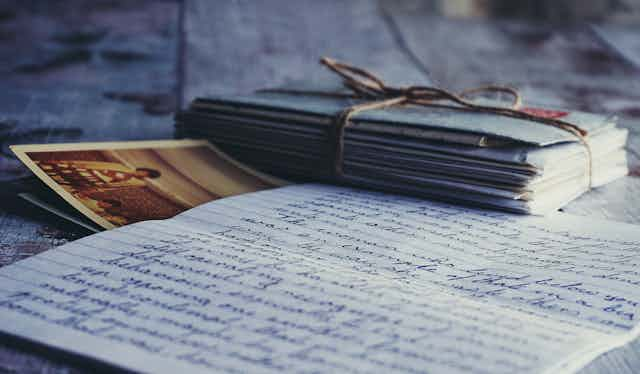
Friday essay: a lament for the lost art of letter-writing – a radical art form reflecting ‘the full catastrophe of life’
PhD Candidate, The University of Melbourne
Disclosure statement
Edwina Preston received funding from the Australia Council for her latest published novel.
University of Melbourne provides funding as a founding partner of The Conversation AU.
View all partners
Letters did not count [as writing]. A woman might write letters while sitting by her father’s sick-bed. She could write them by the fire while the men talked without disturbing them. The strange thing is, I thought, turning over the pages of Dorothy’s letters, what a gift that untaught and solitary girl had for the framing of a sentence, for the fashioning of a scene.
— Virginia Woolf, A Room of One’s Own
Last year I went to the funeral of a friend with whom I shared a house in Melbourne in the early 1990s. While I and my other housemates went on to the full array of box-ticking life experiences – children, careers, relationships, houses – our friend was diagnosed with an aggressive form of multiple sclerosis in her early twenties. When she died, we had not heard her voice for many years.
Of all the eulogies at her funeral, the most arresting was a letter she’d written at 23, read aloud by a former housemate, Delia. Our friend had been travelling at the time; negotiating a fledgling relationship, digesting the reality of her diagnosis, preparing for the suddenly precarious unfolding of her life.
She hadn’t spoken for so long but here in this letter, this imprint of her voice on paper, she sprang suddenly into life. Funny, irreverent, honest, scared: we could hear her. The occasion was sad; but the letter was joyful.
I had forgotten what a powerful time capsule a letter could be.
Read more: Post apocalypse: the end of daily letter deliveries is in sight
Gen X-ers occupy a distinctly precious cultural position – straddling the analogue past of letter writing and the hyper-digital present of TikTok and Instagram. One of my earliest school memories is of learning how to transcribe an address onto an envelope in the form required by post offices (carefully indented at every line, return address on the back). It seems almost archaic now.
We may not have been “the last generation of devoted letter writers” – that title goes to our parents’ or grandparents’ generation – but letter-writing was still a necessary, carefully taught skill when we were growing up.
It was the normal way to communicate with grandparents, international pen-pals, and school friends who had moved to the country. We all sat down at school camp on the first night and wrote our parents a letter, Camp Granada style, supervised by prowling teachers who made sure we gave our parents a worthy account.
I remember too how important it was, as a young adult in the world of pre-internet travel, to land in a far-flung place, track down the Poste Restante and find miraculously waiting for you – as though your arrival was predestined – a handful of pale blue aerograms, enscripted with miniscule, space-saving writing. Letters from home.
In momentary deferral to the anti-hoarding gods, I recently threw out a tranche of these aerograms, sent to me when I travelled India as a 19-year-old. I not only curse myself when I think of this now, but I feel an actual pain in my chest. What insights have I lost into my former self, my family and my friends as a result?
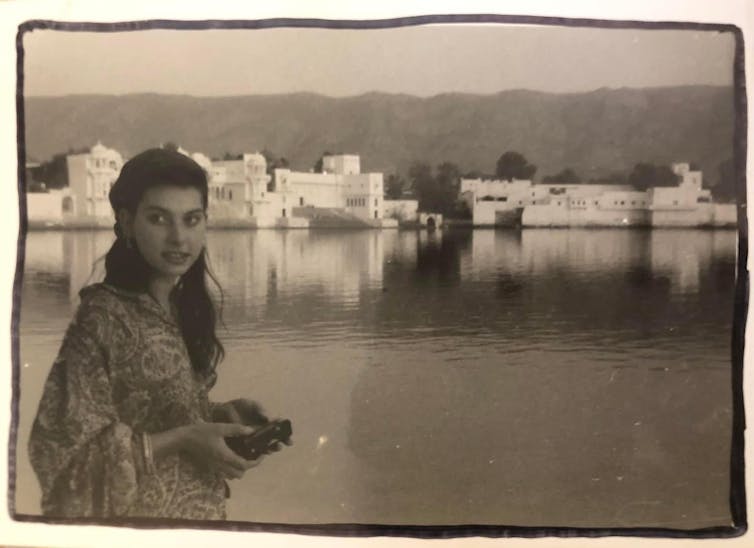
The human condition
The disappearance of letter-writing from Western cultural life is such a recent phenomenon that I don’t dare proclaim its death. From Abelard and Heloise’s 12th-century love missives , dense with biblical references but no less dense with longing, to the letters of Vincent Van Gogh to his brother Theo, it’s hard to imagine how we might have made sense of the human condition without the insights gleaned from letters.

What would we know of the interior worlds of artists and writers, scientists and politicians, sisters and friends and lovers? What would we know about life itself? Or, as importantly, about how to live ? In the first century AD, Seneca articulated his philosophy of stoicism via a series of 124 “ moral letters ” to his young friend Lucilius.
These letters are only nominally a private correspondence between two men; in fact, they were written for a much larger readership that might benefit from Seneca’s solutions to the moral dilemmas of living in the world.
Even if one side of the conversation (Lucilius’s) remained unheard, the letter, as a form, lent a sense of reciprocity and intimacy to Seneca’s words – it enabled him to speak to many as though he were speaking to one. With titles such as “On saving time”, “On old age and death”, “On the relativity of fame”, “On care of health and peace of mind”, Seneca’s letters continue to resonate 2,000 years later.
Rainer Maria Rilke’s ten Letters to a Young Poet , written in 1903-08 and published posthumously in 1929, provided creative guidance to his young recipient, a Czech poet and military student. These letters are famous for Rilke’s inordinately gentle manner, his tenderness and warmth.
Yet it seems that, in breathing a philosophy of art and life into the ear of his young admirer, Rilke also breathes it affirmingly into himself, and into the generations privy to the correspondence since. I noticed traces of his philosophy of creativity – which emphasises patience and attentiveness to the small things of life – in a 1961 letter from Patrick White to Thea Astley I recently read:
Read, think & listen to silence, & shell the peas … concentrating on the work in hand until you know what it is to be a pea — and drudge at the school, & sleep with your husband & bring up your child. That is what I mean when I say “living” …
Unlike the essay or the novel, letters facilitate a kind of collapsing of low and high, profound and profane, the life of domesticity and the life of the spirit. They are not master accounts of ourselves, with all the incidentals written out.
Writer Maria Popova, commenting on the mid-century correspondence of illustrator Edward Gorey and author Peter F. Neumeyer , says the two men wrote to each other of everything “from metaphysics to pancake recipes”.
This democratic levelling of subject matter is perhaps nowhere more evident than in letters, where hierarchies of value don’t prevail as they do in more authoritatively literary forms: the traditional novel, for instance, in which everything must gear toward thematic and narrative resolution.

Letting the real world in
Megan O’Grady, in the New York Times , has described letters as “leaky” in the way they allow a seepage of the real world to occur: “the baby wakes from the nap and cries; the air-raid siren sounds; the social mores and psychodynamics of other eras filter in”. In correspondence, even the rhetorical devices of transition, the elegant segues that smooth a jagged change of subject, are largely dispensed with.
No one, writing a letter, agonises over the wording of a sentence that links two paragraphs. A trail of unexplained ellipses has a particular function in a letter – to break a chain of thought, to attest to bodily movement in temporal space: a kettle being put on, a doorbell answered, a nappy changed.
My friend Delia, reading over letters from her friends in the early 1990s when she was a student in America, said:
It was funny reading these letters back. Sometimes they would be written over days, or even weeks, they’d stop and start and stop again: “Sorry, got distracted with something. Anyway …” Or be continually updated: “Well, I finally got a phone call from X, you won’t believe what happened …”
They were provisional, real-time, patched-together accounts of life as we lived it, as it occurred, on the spot. An unspooling of self onto the page in real time.
Or selves perhaps; each letter, each recipient, facilitating an adjustment of the self, a tweak: there’s the correspondent we make laugh, the correspondent we confide in, the correspondent to whom we offer advice and comfort. Like a diary, a letter can function as a “chronicle of [one’s] hours and days”, but because it is, in essence, a two-way communication – an ongoing, unfinished conversation – a letter invokes a relationship so it needs to be sensitive to the reader in ways a diary need not.
It needs to configure itself for entertainment value. It’s one of the few writing forms that allows the mind of the writer to roam freely, independently, and yet actively connect with an attentive, and presumably sympathetic, reader: a known reader.
The materiality of letters sets them apart from today’s electronic equivalents. Letters are disarmingly tangible when we chance upon them in a forgotten box or tin or bundle: we might have forgotten them, but they didn’t cease to exist. They offer curious subtexts too, not least to do with the presence of the human hand on paper.
A different kind of utterance
I have in my possession pages of my late grandmother’s “scribble” – a self-deprecating term she used (for her handwriting or for the thoughts her letters contained? I was never sure which).
Her backwards-scooping scrawl carries with it her personality somehow – occasionally, I see an echo of it in my own handwriting, a certain soft flourish in an “h” or an “n”. I remember the pale blue pages on which her letters were written, and my habit of placing a heavy-ruled piece of paper beneath my own when I wrote back to her, to ensure my lines were straight.
Particularly precious in my family is a letter written to my father as a little boy by his own father, stationed on an air base in New Guinea in 1943. The letter, on tiny yellow paper, is written in flawless copperplate – a skill my grandfather was particularly proud of, having left school at 12 – and the front of the envelope is illustrated with an image of Ginger Meggs, hand-drawn in coloured ink.
Returning after the war, my grandfather was a difficult, traumatised man, but in his letter there’s a glimpse of the loving young father and husband he was before:
Dear Barry Just a few lines from your Daddy hoping it finds you well; and I also trust that your little yacht arrived alright; and I do hope it sails well for it has really big sails though I think you shall be able to manage it alright after Mum has fixed it all up for you […] Now Barry I guess you are wondering when I shall be home, well I really thought that I would be home for Xmas but now it looks like it shall be early in the new year so I am hoping I get back in time for your birthday for if I do, we shall sure have a birthday party, won’t we, with just you and Leslie and Mumie and me …“
In the last years of my own father’s life, this tiny hand-inked letter had pride of place in a glass display case in his residential care unit: a beautiful relic, the ephemeral trapped on paper.
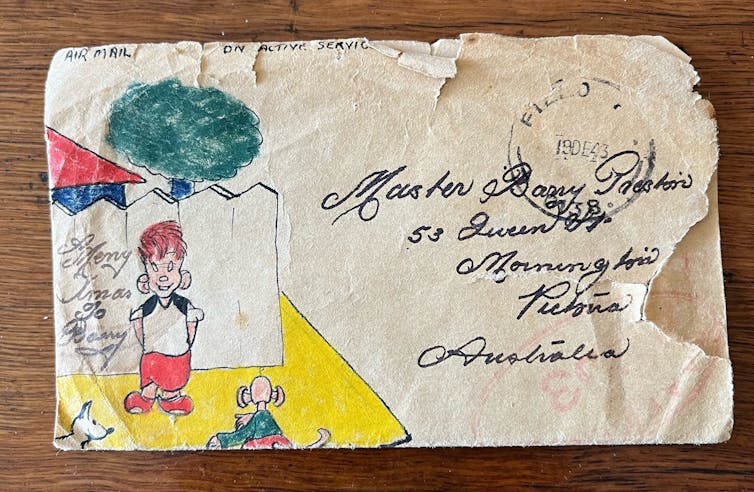
It reminds me of a similarly gentle, loving letter written by John Steinbeck to his son in 1958, upon his son’s announcement that he had fallen in love:
Dear Thom: First – if you are in love – that’s a good thing — that’s about the best thing that can happen to anyone. Don’t let anyone make it small or light to you. Second – There are several kinds of love […] The first kind can make you sick and small and weak but the second can release in you strength, and courage and goodness and even wisdom you didn’t know you had.
Did Steinbeck speak as honestly and tenderly to his son in person? Perhaps, I don’t know. But it’s possible that letters allowed a different kind of utterance for "strong, silent” men of past generations: a benevolent “father-tongue” (lower case) which enabled them to shed, if momentarily, the practised hardness of masculinity.
I know that my grandfather’s letter contains a grace and sweetness that was not present in person. In person, his expression of love was to teach my father how to box.

Read more: Hold the post: there's no such thing as a dead letter
Famous love letters
Love letters, of course, occupy a place of their own within the “genre”, if it can be called a genre. The 5,000 or so letters between Georgia O’Keeffe and Alfred Steiglitz , penned across 30 years, provide a window onto the mutual creative inspiration that existed between the two artists, but also include searing love letters that testify to an enduring sensuality.
“Dearest,” writes Georgia:
— my body is simply crazy with wanting you – If you don’t come tomorrow – I don’t see how I can wait for you – I wonder if your body wants mine the way mine wants yours – the kisses – the hotness – the wetness – all melting together – the being held so tight that it hurts – the strangle and the struggle.

On a voyeuristic level, the love letters of the famous gratify our curiosity – what went on between these two giants of the screen/literary world/art scene? Were they (are they?) like us in their lusts and their pettinesses? Often, yes, they are like us – we’re reassured by their broken promises and bickerings and insecurities.
They say things they shouldn’t, embarrassing things, things they later regret. T.S. Eliot later disavowed his fervent love letters to American speech and drama teacher Emily Hale – they “were the letters of an hallucinated man,” he said. Nevertheless, these letters have an ardour, a heart-on-the-sleeve earnestness, that reveals a different side to the cool modernist poet, a side that was warm-blooded, ruled by the heart, even, possibly, vulnerable.
Letters are immediate; we write them from inside the moment, and so the immediate, the moment, becomes the truth. Their vigour, and their value, lies in this unedited, uneditable quality: they document us, trap fleeting moments in glass. We might even say things that bare our souls. “I am reduced to a thing that wants Virginia,” wrote Vita Sackville-West famously to Virginia Woolf in one such moment in 1926.

Some of the funniest/“dirtiest” letters on the public record are James Joyce’s letters to his wife Nora Barnacle , in which he joyously catalogues her repertoire of farts:
big fat fellows, long windy ones, quick little merry cracks and a lot of tiny little naughty farties ending in a long gush from your hole … I think I would know Nora’s fart anywhere. I think I could pick hers out in a roomful of farting women.
The publication of the letters in 1975 upset Joyce’s grandson, but the correspondence reveals a healthy mutual sexual relationship, free of any false social pieties and, certainly, of embarrassment.
The love letters of famous writers have a pith and poetry the rest of us might not be equal to, but even the simplest love letters, if they’re heartfelt, speak of who we are, or once were, and how we affected other people. They are testament to the risks we take to express deep and difficult feelings; the things we might not have been able to say in the flesh.
My first boyfriend says he wrote me a love letter when we were 16 and I sent it back to him with the spelling corrected in red pen. I can’t remember the spirit with which I embarked on this particular revision, but it’s retrospectively both very funny and an insight into my own priggishness. Nor can I imagine making such amendments now using tracked changes – somehow I think it would be less funny and more tragic.
I have in my possession other love letters from the pre-internet age – not many, a few. They embarrassed me, mainly, at the time, but I’m glad I’ve kept them – they are charged with a force that cuts through time, and connects me with myself as a younger, if more callous, person.
Read more: 'Weaponised irony': after fictionalising Elizabeth Macarthur's life, Kate Grenville edits her letters
Email and autocorrect
And while famous love letters of the past are collected, collated and curated for public consumption, I’m not sure a 21st-century romantic email correspondence will have the same longevity. For one thing, emails are less spontaneous: if only because they are infinitely revisable, deletable – as well as easily forwardable (accidentally or otherwise).
They don’t contain the mark of the person, the pecularities of handwriting or, yes, spelling mistakes – autocorrect puts out these interesting little fires. Writes O’Grady: “It’s hard to imagine that in 50 years we’ll be picking up The Collected Emails of Zadie Smith.”
Email won’t ever be a replacement for the unfolding, from a wadded envelope, of several pages of lovingly tended text. For me, at least. I use email for collegiate communications, friendly transactions, social to-ings and fro-ings. While it might provide the last vestige of formality in an increasingly informal communications world, email remains an inadequate substitute for letters.
Delayed gratification – part of the frisson of a traditional correspondence – is a bad portent when it comes to emails. It’s easy to interpret even the briefest email silence as unwillingness or neglect on the part of the recipient. O’Grady writes:
Email – already an old-fashioned form – isn’t really the electronic replacement of the letter but a different mode of communication entirely: fleeter, tactical, somehow both more and less disposable. It is unwise to commit too much of oneself to electronic code, which lives on in some ether or another, unflung into the fireplace.
Text messages are semiotically interesting in the way they codify language and narrative, but their idiom is brevity. You can flirt in a series of text messages, you can also argue, but you can’t reflect the way you might in a letter; it’s easy to send a platitude or establish a rapport in a text, not so easy to tease out a philosophy.
Letter-writing is a commitment of time and an offering of trust, both an indulgence and an act of generosity. It must trust that what is being related will be accepted. It must assume that its confidences will be honoured.
‘The stuff of life’
As a writer looking for a literary device with which to capture the voice of a troubled female poet in 1960s Melbourne, first-person narrative didn’t work. I tried and got nowhere. It couldn’t satisfactorily make visible the ruptures and randomness of my character’s life, its trivial details and entertaining side-notes: the nappies she had to run off and attend to; the soggy egg cartons glimpsed dishearteningly through a window; the clothesline she feared being garrotted by.
If it’s not doing something to further the narrative , goes the traditional novel-writing wisdom, cut it out . But I wanted to put in the things that didn’t further the narrative: the ephemeral things, apparently unimportant, that are actually the stuff of life.
Letter-writing allows this stuff to be present. Perhaps it’s the only traditional writing form that does, and it gave me a credible reason for putting the trivial, the small, the fleeting into my story. And when I did, to my surprise, my character came to life: she became spontaneous and real and began to speak in a language and voice that seemed authentic.
In her wonderful 1988 essay about writing and motherhood, The Fisherwoman’s Daughter , Ursula Le Guin used the term “mother tongue” to describe an “authentic” women’s language. The mother tongue, she says, speaks with intimacy, proximity, connectivity; it’s the voice with which we talk to a neighbour over the fence, or to our children when they come home late, or to our partners when it’s their turn to take out the bins, or our friends when we’re trying to make them laugh over a drink.
Its power is not in dividing but in binding … We all know it by heart. John have you got your umbrella I think it’s going to rain. Can you come play with me? If I told you once I told you a hundred times … O what am I going to do? … Pass the soy sauce please. Oh, shit … You look like what the cat dragged in …

In its use of the mother tongue, correspondence actually corresponds with the ways we interact with people in our lives, as well as with the spontaneities of speech itself. It doesn’t pretend the writer is not a real person, speaking in an authoritative void, like an oracle, to untethered, disembodied others. It allows the full catastrophe of life to be present and visible.
Researching the letters of women poets in preparation for working on my novel , I realised letter-writing has always been socially acceptable for women in ways the “master” forms of literary production – the novel, the poem – haven’t been. So long as they were literate, women have always written letters – as an essential form of communication and self-expression, but also because writing letters didn’t disturb the status quo or conflict with domestic or mothering responsibilities.
A woman didn’t need to consciously conceive of herself as a “writer” in order to be an avid letter-writer. And a woman didn’t need a “room of her own” in order to write her letters; she could write them among the potato peels and bills and children’s laundry. Quietly, (apparently) benignly, women have for centuries been able to refine and experiment with their writing practice under the guise of merely “writing a letter”.

So perhaps letter-writing has functioned as a kind of ruse or subterfuge for women: a way of writing without seeming to have “unseemly” writerly ambitions. I think of my grandmother’s characterisation of her letters as “scribble”.
It was not the done thing for a woman of her generation to publicise her accomplishments, but I knew she knew she was a good writer, with lovely handwriting, and a gentle and responsive style. Calling her writing “scribble”, I realised, was a way of repudiating the criticism of thinking she had something to say, but getting on with the job of saying it nevertheless.
As I wrote my character’s letters to her sister, I became more and more convinced that letter-writing has functioned as a radical, maybe even revolutionary, writing form for women. This is because, on the one hand, it was considered so socially unthreatening that it went under the radar, and, on the other, because it allowed the small daily realities of women’s lives to be made visible.
It could be written from within the midst of their lives – not separate, not in a garret room or writer’s hut — but right there, on the kitchen table amongst the scraps and the bills and the children’s toys.
Gregory Kratzmann, editor of Australian poet Gwen Harwood’s voluminous correspondence, says Harwood wrote her correspondence in precisely this way:
She wrote letters quickly and with great facility, often when she was surrounded by domestic activity […] sometimes three or more long letters in the same day […] the activity of writing was an essential part of living […]
The prolific 19th-century novelist Margaret Oliphant used this same “kitchen-table” approach to write her novels – and there were nearly one hundred of them. Far from imperilling her progress, she felt that
her writing profited, from the difficult, obscure, chancy connection between the art work and emotional/manual/managerial complex of skills and tasks called “housework,” and that to sever that connection would put the writing itself at risk, would make it, in her word, unnatural.
If letter-writing can tolerate interruption, distraction, diversion, it stands to reason that novel writing can too. And poetry writing. And even philosophical treatise writing. Perhaps being interrupted is not so terrible nor so damaging to artistic creation as we have always thought. Who says that the uninterrupted thought is better than the interrupted one?
Read more: Gwen Harwood was one of Australia's finest poets – she was also one of the most subversive
‘The framing of a sentence’
I have never had an inviolate writing space of my own. Everything I have written has been interrupted constantly by children and domestic demands. I stop to remedy problems; attend to outbursts of screaming; acquire and prepare drawing materials; find lost books; answer spelling enquiries; listen to an imaginative narrative just written; lace on rollerblades; deal with insistent lamentations that “There’s nothing to eat”.
My writing space has been fundamentally accessible to my children: they remove pens and papers and post-it notes, use my desk as a place to apply nail-polish, leave tell-tale trails of crumbs and rings from glasses. Yes, it’s annoying. Does it make my writing worse? No. Sometimes it makes it better.
Writing my character, contemplating all this, I thought – dare I say it? – that perhaps Virginia Woolf was wrong. Perhaps “a room of one’s own” has never been necessary to the writing of prose. Perhaps the seeds of a different kind of writing practice, one that served women’s realities and responsibilities better, can be glimpsed in the practice of letter writing.
Correspondence has always enabled women to become caught up, immersed, in the moment of the work, yet remain equally available and connected to life around them.
Thus it deserves our attention, even as it fades from view as a writing practice. To return to Virginia Woolf’s silently observed letter-writing girl at the beginning of this essay: “[W]hat a gift that untaught and solitary girl had for the framing of a sentence, for the fashioning of a scene.”
- Australia Post
- Virginia Woolf
- Friday essay
- Vincent Van Gogh
- Love letters
- Gwen Harwood

Head of Evidence to Action

Supply Chain - Assistant/Associate Professor (Tenure-Track)

Education Research Fellow

OzGrav Postdoctoral Research Fellow

Casual Facilitator: GERRIC Student Programs - Arts, Design and Architecture

General Training Writing Task 1 – Letter
The IELTS General Training Writing Task 1 asks you to write a letter of a minimum of 150 words in response to some situation or a problem. The task will probably ask you to complain about something, to request information, ask for help, to make arrangements and/or explain a situation. All these are fairly similar tasks.
Letter Structure
- Salutation – Example: Dear Sir or Dear John
- Opening statement – This paragraph or sentence should include the purpose for writing.
- Body paragraph 1 – This paragraph should explain one point of the letter with details.
- Body paragraph 2 – This paragraph should explain one point of the letter with details.
- Body paragraph 3 – This paragraph should explain one point of the letter with details.
- Closing statement – This statement should be written in a separate line, after covering the final point and before signing off Example: Hoping to see you soon.
- Signing off – Example: Yours sincerely, Yours lovingly
- Name – Could be any name
Letter Types and Salutations
| Dear Sir or Madam | Yours faithfully | |
| Dear Mr. Sharma | Yours sincerely | |
| Dear Ramesh | Yours truly | |
| Dear Sarah | Yours lovingly |
Some Examples
| Formal | |
| Informal | |
| Formal | |
| Informal | |
| Formal | |
| Formal | |
| Informal | |
| Formal | |
| Informal | |
| Informal |
Study at Your Convenience, Anywhere You Are
Download our app and watch classes in offline mode.

Apple users download the app from above link and then use this organization code: agicq
Disclaimer: IELTS is a registered trademark of University of Cambridge, the British Council, and IDP Education Australia. This site and its owners are not affiliated, approved or endorsed by the University of Cambridge ESOL, the British Council, and IDP Education Australia. This website is an independent site created for the purpose of providing guidance and lessons for students preparing for English Language Testing exams in particular the IELTS.
Tips for Reading an Assignment Prompt
Asking analytical questions, introductions, what do introductions across the disciplines have in common, anatomy of a body paragraph, transitions, tips for organizing your essay, counterargument, conclusions.

How to write a letter
HOW TO WRITE A LETTER: A GUIDE FOR TEACHERS AND STUDENTS

In this age of digital communication, writing letters is becoming something of a lost art. Emails and text messages can be sent instantly and for a fraction of the cost good old-fashioned snail mail can offer.
So, why bother teaching letter-writing at all? Well, though electronic ‘letters’ are often freer in formatting and language than physical letters, we can also apply letter-writing rules to electronic media. However, physical letters do offer some distinct benefits of their own too.
A WELL-WRITTEN LETTER CAN CHANGE THE WORLD.
Whilst we pride ourselves here on how to write a great essay, information report, or another text type that is primarily used in an educational setting, the ability to craft a powerful letter or email has literally changed people’s lives, altered the course of history and been the difference between life and death in some cases.
It can be the one opportunity to remove all the noise and confusion on any subject area and honestly tell someone how you feel straight from the heart. Pen to paper.
For whatever reason, a thousand emails, tweets, and likes will never have the same impact as a well-crafted handwritten letter. Its very creation and existence show your reader how passionate and genuine about what it contains.
Letters fall under the transactional writing category; if you want to know more about transactional texts, be sure to check out our in-depth guide here.

COMPLETE LETTER WRITING UNIT FOR STUDENTS

Over 100 PAGES of engaging RESOURCES , various letter SAMPLES , LESSON PLANS and INTERACTIVE DIGITAL RESOURCES to teach your students how to write amazing LETTERS and EMAILS .
Teach this life skill with confidence through this excellent ALL-IN-ONE RESOURCE . No preparation is required.
3 REASONS TO TEACH LETTER WRITING
1. the personal touch: .

Those of us who grew up in an age before the internet got going will remember the excitement of waiting for and receiving a letter. Many of us will have had childhood pen pals we never met or received love letters from our teenage sweethearts. Maybe some treasured letters are still securely stored in a bedside drawer.
There is something extremely personal and intimate about the letter that email cannot capture. Letters are physical, and their increasing rarity makes them seem even more intimate today.
In this day and age, receiving a personally written letter is something a unicorn in communication terms. Students who know how to produce a well-crafted letter can use it to their advantage. For example, any business hiring manager will undoubtedly be numbed by the constant torrent of emails flooding their inbox.
That mailed resume accompanied by a handwritten letter that waits for them on their desk in the morning will surely stand out and secure an attentive read. The letter, in its various forms, is guaranteed to stand out and make an impact in an age where the vast majority of communication is digital.
3. Handwriting

Just as letter writing has declined in popularity, so too has the emphasis on well-developed handwriting skills. You can, if you wish, take the opportunity here to have the students work on their handwriting skills.
While students may protest that they can accomplish the task much quicker by word-processing, another benefit of handwriting a letter is that the speed becomes almost meditative. This allows students to focus carefully on their grammar and punctuation without always resorting to the crutch of spell-checkers and grammar correction software.
FORMAL AND INFORMAL LETTER WRITING: WHAT’S THE DIFFERENCE?
The table below outlines whether your letter should be written formally or informally, with some suggested prompts . Whilst there are many similarities, a formal letter should always be considered as a document with a real purpose and ramifications.
FORMAL LETTER FEATURES
USED FOR PROFESSIONAL COMMUNICATION THESE DOCUMENTS FOLLOW A PRESCRIBED FORMAT. THEY ARE WRITTEN IN A PASSIVE VOICE FOR A SPECIFIC PURPOSE AND IN MANY CASES ARE LEGALLY BINDING. SOME EXAMPLES ARE.
INVITATION Make someone feel special about an upcoming event.
APPLICATION Write a professional letter of application for a job or group you wish to join.
REFEREE / REFERENCE Vouch for another’s skills, personality or credibility.
ACCEPTANCE & REJECTION Approve or deny an applicant in a professional manner.
MAKE AN OFFER Make a formal and binding offer in writing.
EXIT / RESIGNATION Formally leave or step down in a professional and dignified manner.
INFORMAL LETTER FEATURES
USED FOR PERSONAL COMMUNICATION THESE LETTERS HAVE NO PRESCRIBED FORMAT AND ARE WRITTEN IN AN ACTIVE VOICE.
THANK YOU Let someone know you appreciate their efforts.
CONGRATULATIONS Acknowledge someone’s achievements in life.
GRIEVANCE / LOSS Acknowledge someones personal loss or suffering and let them know you care.
FRIENDSHIP & LOVE Tell someone how special they are to you and why?
LETTER TO THE EDITOR / MAYOR ETC. Let someone know how their actions and adversely affect you and others.
LETTER TO SELF Give your older or younger self some words of advice and wisdom.
INFORMATIONAL UPDATE Write a letter back home telling them what you have been up to.
HOW TO WRITE FORMAL LETTERS
The writing process begins with planning.
As with all genres of writing, the process of formal letter writing should start with planning. This should involve sketching a brief outline from which to work rather than a comprehensive detailing of minutiae. The plan should include:
- Note addresses, names etc. – who are you writing to?
- Record the purpose of the letter – what do you want to say?
- List points to be made (each will form a paragraph) – how will you say it?
- State action point – what do you want the reader to do?
Formal letters can be written for a wide range of purposes and may come in various shapes, including a letter of complaint, a cover letter accompanying a job application, a letter of invitation, a reference letter, or a proposal letter – to name a few. Though each will adhere to its own rules of formatting and tone when writing formal letters, students should avoid using slang or contractions.
Language should be straightforward and polite. Encourage students to avoid bursts of purple prose in favor of direct, functional language. Usually, a formal letter will be written to achieve a particular end and should be written with that end foremost in mind. Students should avoid meanderings and stay firmly focused on the task at hand.
TIPS FOR WRITING GREAT FORMAL LETTERS

- The writer’s address should be in the top right-hand corner.
- The date should be written below the writer’s address
- The recipient’s name and address are below that on the left-hand side
- Use the correct opening (Dear Sir / Madam, Dear Mrs Ferguson, etc.)
- Use Standard English
- The opening sentence should explain the purpose of the letter
- Each paragraph should make a single specific point
- Use an appropriate formal tone and register in the wording of the letter
- Avoid contractions, slang, and abbreviations
- The concluding ‘action point’ paragraph states what you want the recipient to do
- The formal ending, such as Yours Sincerely or Yours Faithfully
A Note on Salutations
If the student knows the intended recipient’s name, start with Dear Mr. / Mrs Surname and end with Yours Sincerely. If they don’t know the recipient’s name, start with Dear Sir / Madam and end with Yours Faithfully.
Use of Rhetorical Devices
As mentioned, formal letter writing focuses on attempting to convince someone to take some course of action or other. To do this, it is helpful to employ some rhetorical devices to make the writing more persuasive . Some useful techniques to encourage your students to employ include:
Direct Address: Using the pronoun ‘you’ in a formal letter makes the reader feel that you are speaking directly to them. This helps to engage the reader and encourage them to continue reading the letter.
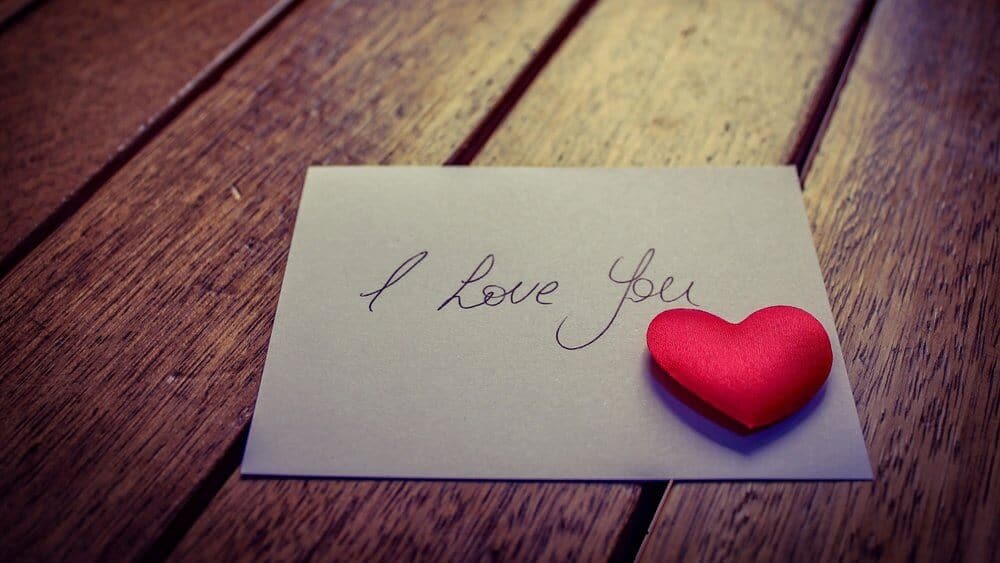
Emotive Language: Where students are trying to convince the reader to take a course of action, the use of emotive language can often be a powerful tool. Students can use either positive or negative colored words to create the desired response in the reader.
Facts and Figures: Another way to persuade and convince is to employ facts and figures to support the points made in the letter.
FORMAL LETTER STUDENT EXAMPLES

How to write an informal letter
Common features of informal letters:.
There are far fewer rules to follow when writing an informal letter, but there are still some practical guidelines to follow that will prove helpful for students engaged in writing informally.
As with any piece of writing, it is important to consider who the audience is and the reason for writing in the first place. In particular, this will help decide the tone and the language register. The more intimate the relationship, the more informal the language can be.
Though the letter will be informal, it will still have a purpose. Information should still be organized into paragraphs, as would be done with a formal, more ‘official’ letter. Students sometimes struggle with this aspect, as they often conflate ‘informal’ with ‘disorganized.’ Making them plan their informal letter before writing can help ensure it is sufficiently organized.
HOW TO START AN INFORMAL LETTER
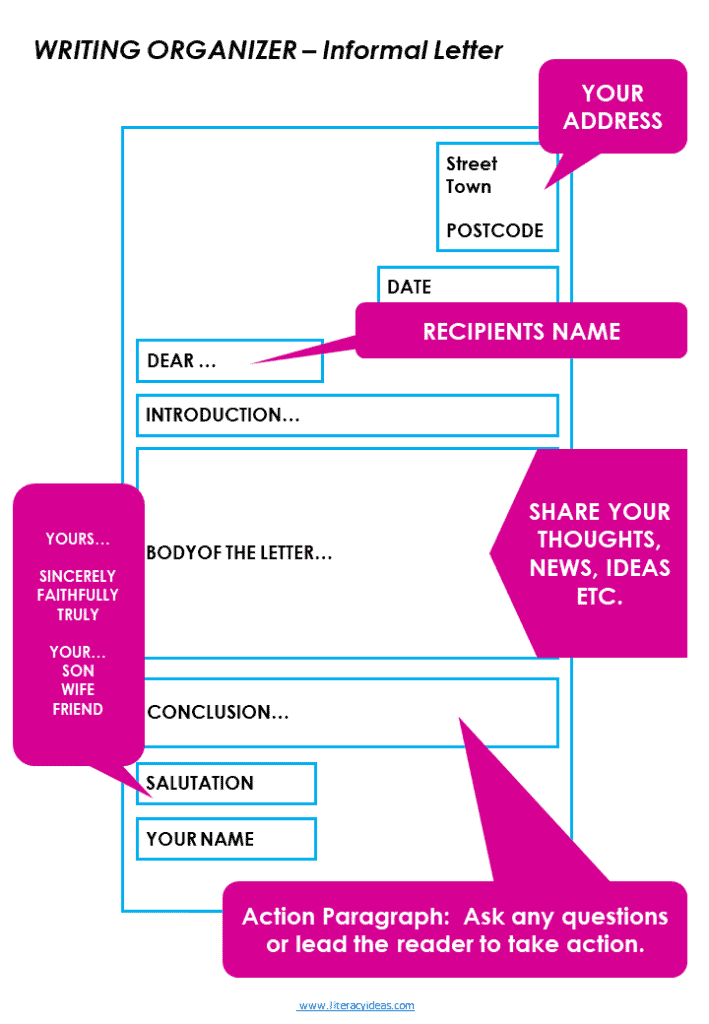
Informal letters will start with a greeting appropriate to how close the relationship is. For acquaintances, this may be ‘Dear Tom,’ (using the first name instead of the surname) to a very informal ‘Hi Jane,’. Don’t forget the comma after the name!
After the greeting, a general opening sentence should follow. Usually, this will be something like a ‘How are you?’ or a ‘How have you been?’. If the recipient is married or has kids, you may wish to ask how their spouse or children are.
Next, students should state the reason for writing. The language should be open and friendly in tone and, in contrast to the formal letter, colloquial language, idiomatic expressions, and contractions are perfectly okay and even desirable.
Just as the opening salutation to an informal letter is much more relaxed, so too will the closing salutation. There are many possibilities for the students to choose here, and their decision will depend on who they are writing to and their personal preferences. Some examples of possible closings include ‘Love’, ‘Best regards’, ‘All the best’, and ‘Thanks’.
INFORMAL LETTER STUDENT EXAMPLES

Teaching Resources
Use our resources and tools to improve your student’s writing skills through proven teaching strategies.
PRACTICE LETTER WRITING WITH THESE ACTIVITIES FOR STUDENTS
The most effective way for students to internalize all the features of letter writing, formal or informal, is to gain experience by writing various letters for differing purposes. The following activities offer some suggestions for students to get practising today:
1. FICTION AS A SPRINGBOARD
Have students write as if they were a character from a piece of fiction you have been reading in class. Choosing a dramatic point in the plot , ask students to imagine they are one of the characters writing a letter to another character in the story. This writer may be either formal or informal, depending on the scenario presented. This will give students realistic letter-writing practice while also getting them to engage closely with the text and respond imaginatively to its themes.
2. THE AGONY AUNT
Either offer a range of possible life predicaments or cut out the questions from the ‘agony aunt’ page of a local newspaper. Students must write back offering advice in response to the predicaments expressed in the question or predicament. The response should be written in full letter format. This activity also lends itself to several variations. The response may be written to a close friend, for example, or written from the perspective of a professional agony aunt employing a more formal tone and presentation.
3. A LETTER OF COMPLAINT
Have students think of their favorite candy bar or clothing item. Encourage them to imagine they have bought this product lately and found it to be substandard. Students must write a formal letter of complaint to the manufacturer outlining their complaint and recommending a course of action to satisfactorily resolve that complaint. They must use all the features of a formal letter as outlined above.
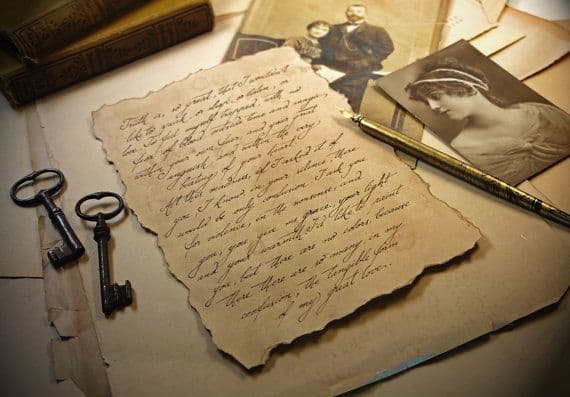
HOW TO MAKE YOUR HANDWRITTEN LETTERS LOOK OLD AND AUTHENTIC.
- Write in pencil or a calligraphy pen,
- screw them up tightly and carefully unfold and flatten.
- Lightly dab coffee stains over the paper to make it look aged.
- Carefully singe or burn the edges of your paper.
- Add some sepia-filtered photos for effect.
SIGNING-OFF
As students become more confident in their understanding of letter-writing formats, encourage them to exchange letters with each other for peer assessment. You may wish to provide them with a checklist of features to look for while reading over their partner’s work.
Letter-writing can also be a great way to partner up with schools overseas; often, children studying English as a second language will be delighted to receive letters from (and write to) students in English-speaking countries. And though email increasingly encroaches on the traditional territory of the letter, many of the skills garnered in the practice of letter writing are transferable to the modern manifestation. There is ample opportunity here to link letter-writing learning with approaches to writing emails too.
Letter-writing can provide a focus for a wide range of learning objectives while also teaching students valuable practical skills that will serve them well beyond their school years, both in their personal and work lives. And who knows, perhaps in years to come, one of the letters your student writes in your class may become a treasured keepsake in someone’s bedside drawer.
LETTER WRITING GRAPHIC ORGANIZERS (TEMPLATES)
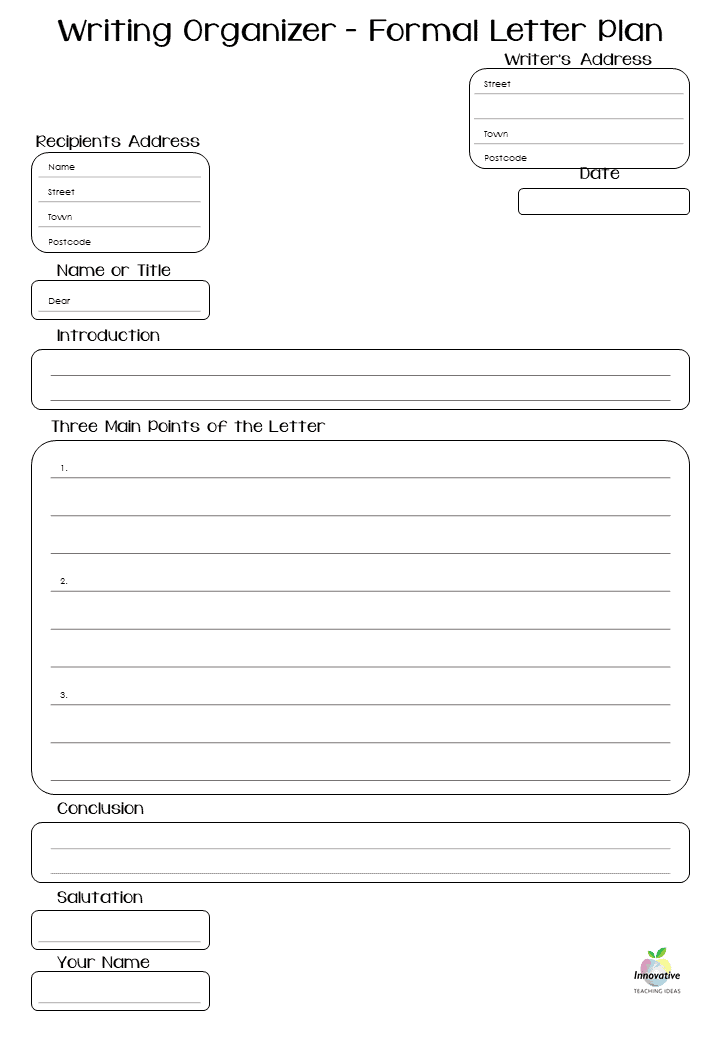

WRITING CHECKLIST & RUBRIC BUNDLE FOR ALL TEXT TYPES

⭐⭐⭐⭐⭐ (92 Reviews)
HOW TO WRITE A FORMAL LETTER TUTORIAL VIDEO
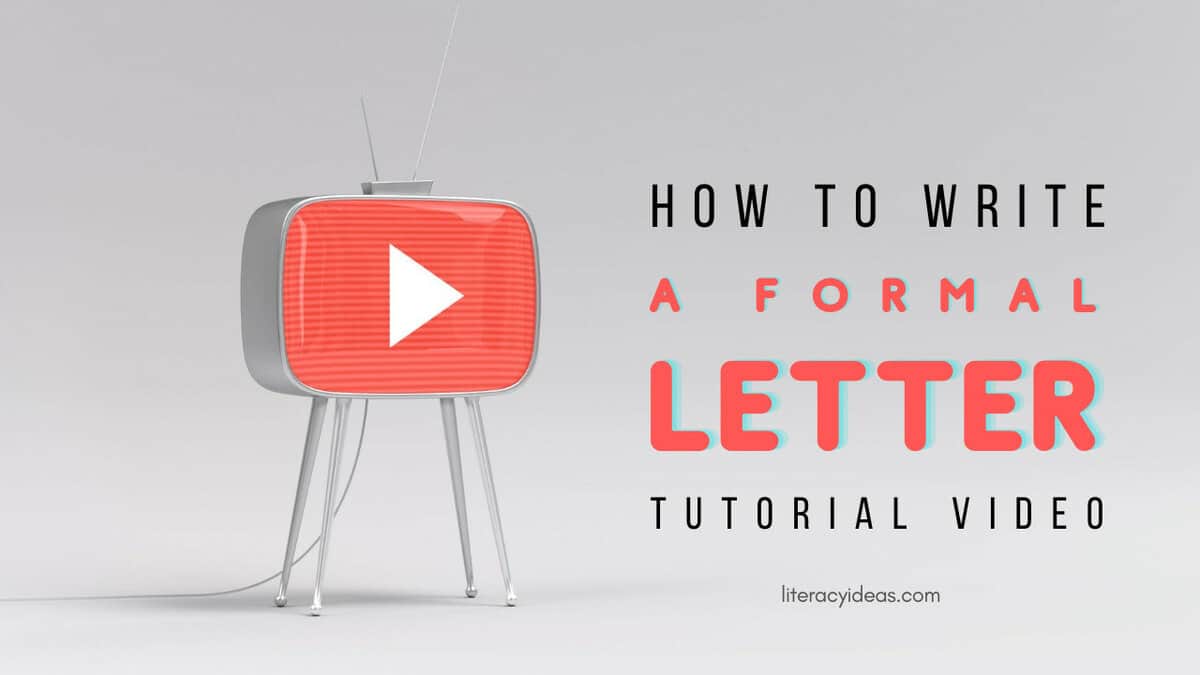
OTHER GREAT ARTICLES RELATED TO LETTER WRITING

Transactional Writing

Personal Narrative Writing Guide

How to Write a Recount Text (And Improve your Writing Skills)
Content for this page has been written by Shane Mac Donnchaidh. A former principal of an international school and university English lecturer with 15 years of teaching and administration experience. Editing and support content has been provided by the literacyideas team.
Have a language expert improve your writing
Check your paper for plagiarism in 10 minutes, generate your apa citations for free.
- Knowledge Base
- College essay
How to Write a College Essay | A Complete Guide & Examples
The college essay can make or break your application. It’s your chance to provide personal context, communicate your values and qualities, and set yourself apart from other students.
A standout essay has a few key ingredients:
- A unique, personal topic
- A compelling, well-structured narrative
- A clear, creative writing style
- Evidence of self-reflection and insight
To achieve this, it’s crucial to give yourself enough time for brainstorming, writing, revision, and feedback.
In this comprehensive guide, we walk you through every step in the process of writing a college admissions essay.
Table of contents
Why do you need a standout essay, start organizing early, choose a unique topic, outline your essay, start with a memorable introduction, write like an artist, craft a strong conclusion, revise and receive feedback, frequently asked questions.
While most of your application lists your academic achievements, your college admissions essay is your opportunity to share who you are and why you’d be a good addition to the university.
Your college admissions essay accounts for about 25% of your application’s total weight一and may account for even more with some colleges making the SAT and ACT tests optional. The college admissions essay may be the deciding factor in your application, especially for competitive schools where most applicants have exceptional grades, test scores, and extracurriculars.
What do colleges look for in an essay?
Admissions officers want to understand your background, personality, and values to get a fuller picture of you beyond your test scores and grades. Here’s what colleges look for in an essay :
- Demonstrated values and qualities
- Vulnerability and authenticity
- Self-reflection and insight
- Creative, clear, and concise writing skills
Prevent plagiarism. Run a free check.
It’s a good idea to start organizing your college application timeline in the summer of your junior year to make your application process easier. This will give you ample time for essay brainstorming, writing, revision, and feedback.
While timelines will vary for each student, aim to spend at least 1–3 weeks brainstorming and writing your first draft and at least 2–4 weeks revising across multiple drafts. Remember to leave enough time for breaks in between each writing and editing stage.
Create an essay tracker sheet
If you’re applying to multiple schools, you will have to juggle writing several essays for each one. We recommend using an essay tracker spreadsheet to help you visualize and organize the following:
- Deadlines and number of essays needed
- Prompt overlap, allowing you to write one essay for similar prompts
You can build your own essay tracker using our free Google Sheets template.
College essay tracker template
Ideally, you should start brainstorming college essay topics the summer before your senior year. Keep in mind that it’s easier to write a standout essay with a unique topic.
If you want to write about a common essay topic, such as a sports injury or volunteer work overseas, think carefully about how you can make it unique and personal. You’ll need to demonstrate deep insight and write your story in an original way to differentiate it from similar essays.
What makes a good topic?
- Meaningful and personal to you
- Uncommon or has an unusual angle
- Reveals something different from the rest of your application
Brainstorming questions
You should do a comprehensive brainstorm before choosing your topic. Here are a few questions to get started:
- What are your top five values? What lived experiences demonstrate these values?
- What adjectives would your friends and family use to describe you?
- What challenges or failures have you faced and overcome? What lessons did you learn from them?
- What makes you different from your classmates?
- What are some objects that represent your identity, your community, your relationships, your passions, or your goals?
- Whom do you admire most? Why?
- What three people have significantly impacted your life? How did they influence you?
How to identify your topic
Here are two strategies for identifying a topic that demonstrates your values:
- Start with your qualities : First, identify positive qualities about yourself; then, brainstorm stories that demonstrate these qualities.
- Start with a story : Brainstorm a list of memorable life moments; then, identify a value shown in each story.
After choosing your topic, organize your ideas in an essay outline , which will help keep you focused while writing. Unlike a five-paragraph academic essay, there’s no set structure for a college admissions essay. You can take a more creative approach, using storytelling techniques to shape your essay.
Two common approaches are to structure your essay as a series of vignettes or as a single narrative.
Vignettes structure
The vignette, or montage, structure weaves together several stories united by a common theme. Each story should demonstrate one of your values or qualities and conclude with an insight or future outlook.
This structure gives the admissions officer glimpses into your personality, background, and identity, and shows how your qualities appear in different areas of your life.
Topic: Museum with a “five senses” exhibit of my experiences
- Introduction: Tour guide introduces my museum and my “Making Sense of My Heritage” exhibit
- Story: Racial discrimination with my eyes
- Lesson: Using my writing to document truth
- Story: Broadway musical interests
- Lesson: Finding my voice
- Story: Smells from family dinner table
- Lesson: Appreciating home and family
- Story: Washing dishes
- Lesson: Finding moments of peace in busy schedule
- Story: Biking with Ava
- Lesson: Finding pleasure in job well done
- Conclusion: Tour guide concludes tour, invites guest to come back for “fall College Collection,” featuring my search for identity and learning.
Single story structure
The single story, or narrative, structure uses a chronological narrative to show a student’s character development over time. Some narrative essays detail moments in a relatively brief event, while others narrate a longer journey spanning months or years.
Single story essays are effective if you have overcome a significant challenge or want to demonstrate personal development.
Topic: Sports injury helps me learn to be a better student and person
- Situation: Football injury
- Challenge: Friends distant, teachers don’t know how to help, football is gone for me
- Turning point: Starting to like learning in Ms. Brady’s history class; meeting Christina and her friends
- My reactions: Reading poetry; finding shared interest in poetry with Christina; spending more time studying and with people different from me
- Insight: They taught me compassion and opened my eyes to a different lifestyle; even though I still can’t play football, I’m starting a new game
Brainstorm creative insights or story arcs
Regardless of your essay’s structure, try to craft a surprising story arc or original insights, especially if you’re writing about a common topic.
Never exaggerate or fabricate facts about yourself to seem interesting. However, try finding connections in your life that deviate from cliché storylines and lessons.
| Common insight | Unique insight |
|---|---|
| Making an all-state team → outstanding achievement | Making an all-state team → counting the cost of saying “no” to other interests |
| Making a friend out of an enemy → finding common ground, forgiveness | Making a friend out of an enemy → confront toxic thinking and behavior in yourself |
| Choir tour → a chance to see a new part of the world | Choir tour → a chance to serve in leading younger students |
| Volunteering → learning to help my community and care about others | Volunteering → learning to be critical of insincere resume-building |
| Turning a friend in for using drugs → choosing the moral high ground | Turning a friend in for using drugs → realizing the hypocrisy of hiding your secrets |
Admissions officers read thousands of essays each year, and they typically spend only a few minutes reading each one. To get your message across, your introduction , or hook, needs to grab the reader’s attention and compel them to read more..
Avoid starting your introduction with a famous quote, cliché, or reference to the essay itself (“While I sat down to write this essay…”).
While you can sometimes use dialogue or a meaningful quotation from a close family member or friend, make sure it encapsulates your essay’s overall theme.
Find an original, creative way of starting your essay using the following two methods.
Option 1: Start with an intriguing hook
Begin your essay with an unexpected statement to pique the reader’s curiosity and compel them to carefully read your essay. A mysterious introduction disarms the reader’s expectations and introduces questions that can only be answered by reading more.
Option 2: Start with vivid imagery
Illustrate a clear, detailed image to immediately transport your reader into your memory. You can start in the middle of an important scene or describe an object that conveys your essay’s theme.
A college application essay allows you to be creative in your style and tone. As you draft your essay, try to use interesting language to enliven your story and stand out .
Show, don’t tell
“Tell” in writing means to simply state a fact: “I am a basketball player.” “ Show ” in writing means to use details, examples, and vivid imagery to help the reader easily visualize your memory: “My heart races as I set up to shoot一two seconds, one second一and score a three-pointer!”
First, reflect on every detail of a specific image or scene to recall the most memorable aspects.
- What are the most prominent images?
- Are there any particular sounds, smells, or tastes associated with this memory?
- What emotion or physical feeling did you have at that time?
Be vulnerable to create an emotional response
You don’t have to share a huge secret or traumatic story, but you should dig deep to express your honest feelings, thoughts, and experiences to evoke an emotional response. Showing vulnerability demonstrates humility and maturity. However, don’t exaggerate to gain sympathy.
Use appropriate style and tone
Make sure your essay has the right style and tone by following these guidelines:
- Use a conversational yet respectful tone: less formal than academic writing, but more formal than texting your friends.
- Prioritize using “I” statements to highlight your perspective.
- Write within your vocabulary range to maintain an authentic voice.
- Write concisely, and use the active voice to keep a fast pace.
- Follow grammar rules (unless you have valid stylistic reasons for breaking them).
You should end your college essay with a deep insight or creative ending to leave the reader with a strong final impression. Your college admissions essay should avoid the following:
- Summarizing what you already wrote
- Stating your hope of being accepted to the school
- Mentioning character traits that should have been illustrated in the essay, such as “I’m a hard worker”
Here are two strategies to craft a strong conclusion.
Option 1: Full circle, sandwich structure
The full circle, or sandwich, structure concludes the essay with an image, idea, or story mentioned in the introduction. This strategy gives the reader a strong sense of closure.
In the example below, the essay concludes by returning to the “museum” metaphor that the writer opened with.
Option 2: Revealing your insight
You can use the conclusion to show the insight you gained as a result of the experiences you’ve described. Revealing your main message at the end creates suspense and keeps the takeaway at the forefront of your reader’s mind.
Revise your essay before submitting it to check its content, style, and grammar. Get feedback from no more than two or three people.
It’s normal to go through several rounds of revision, but take breaks between each editing stage.
Also check out our college essay examples to see what does and doesn’t work in an essay and the kinds of changes you can make to improve yours.
Respect the word count
Most schools specify a word count for each essay , and you should stay within 10% of the upper limit.
Remain under the specified word count limit to show you can write concisely and follow directions. However, don’t write too little, which may imply that you are unwilling or unable to write a thoughtful and developed essay.
Check your content, style, and grammar
- First, check big-picture issues of message, flow, and clarity.
- Then, check for style and tone issues.
- Finally, focus on eliminating grammar and punctuation errors.
Get feedback
Get feedback from 2–3 people who know you well, have good writing skills, and are familiar with college essays.
- Teachers and guidance counselors can help you check your content, language, and tone.
- Friends and family can check for authenticity.
- An essay coach or editor has specialized knowledge of college admissions essays and can give objective expert feedback.
The checklist below helps you make sure your essay ticks all the boxes.
College admissions essay checklist
I’ve organized my essay prompts and created an essay writing schedule.
I’ve done a comprehensive brainstorm for essay topics.
I’ve selected a topic that’s meaningful to me and reveals something different from the rest of my application.
I’ve created an outline to guide my structure.
I’ve crafted an introduction containing vivid imagery or an intriguing hook that grabs the reader’s attention.
I’ve written my essay in a way that shows instead of telling.
I’ve shown positive traits and values in my essay.
I’ve demonstrated self-reflection and insight in my essay.
I’ve used appropriate style and tone .
I’ve concluded with an insight or a creative ending.
I’ve revised my essay , checking my overall message, flow, clarity, and grammar.
I’ve respected the word count , remaining within 10% of the upper word limit.
Congratulations!
It looks like your essay ticks all the boxes. A second pair of eyes can help you take it to the next level – Scribbr's essay coaches can help.
Colleges want to be able to differentiate students who seem similar on paper. In the college application essay , they’re looking for a way to understand each applicant’s unique personality and experiences.
Your college essay accounts for about 25% of your application’s weight. It may be the deciding factor in whether you’re accepted, especially for competitive schools where most applicants have exceptional grades, test scores, and extracurricular track records.
A standout college essay has several key ingredients:
- A unique, personally meaningful topic
- A memorable introduction with vivid imagery or an intriguing hook
- Specific stories and language that show instead of telling
- Vulnerability that’s authentic but not aimed at soliciting sympathy
- Clear writing in an appropriate style and tone
- A conclusion that offers deep insight or a creative ending
While timelines will differ depending on the student, plan on spending at least 1–3 weeks brainstorming and writing the first draft of your college admissions essay , and at least 2–4 weeks revising across multiple drafts. Don’t forget to save enough time for breaks between each writing and editing stage.
You should already begin thinking about your essay the summer before your senior year so that you have plenty of time to try out different topics and get feedback on what works.
Most college application portals specify a word count range for your essay, and you should stay within 10% of the upper limit to write a developed and thoughtful essay.
You should aim to stay under the specified word count limit to show you can follow directions and write concisely. However, don’t write too little, as it may seem like you are unwilling or unable to write a detailed and insightful narrative about yourself.
If no word count is specified, we advise keeping your essay between 400 and 600 words.
Is this article helpful?
Other students also liked.
- What Do Colleges Look For in an Essay? | Examples & Tips
- College Essay Format & Structure | Example Outlines
- How to Revise Your College Admissions Essay | Examples
More interesting articles
- Choosing Your College Essay Topic | Ideas & Examples
- College Essay Examples | What Works and What Doesn't
- Common App Essays | 7 Strong Examples with Commentary
- How Long Should a College Essay Be? | Word Count Tips
- How to Apply for College | Timeline, Templates & Checklist
- How to End a College Admissions Essay | 4 Winning Strategies
- How to Make Your College Essay Stand Out | Tips & Examples
- How to Research and Write a "Why This College?" Essay
- How to Write a College Essay Fast | Tips & Examples
- How to Write a Diversity Essay | Tips & Examples
- How to Write a Great College Essay Introduction | Examples
- How to Write a Scholarship Essay | Template & Example
- How to Write About Yourself in a College Essay | Examples
- Style and Tone Tips for Your College Essay | Examples
- US College Essay Tips for International Students
"I thought AI Proofreading was useless but.."
I've been using Scribbr for years now and I know it's a service that won't disappoint. It does a good job spotting mistakes”

Letter Writing – Explore What is, Different Types with Examples
Letter writing is a timeless form of communication that has evolved but remains an essential skill for personal, professional, and formal exchanges. Let’s explore what letter writing is, the different types of letters, and provide examples for each.
What is Letter Writing?
Letter writing involves the creation of messages sent to a recipient via written words. Letters can serve various purposes, from personal communication to formal business exchanges. They are structured to convey clear messages and often follow specific formats depending on their purpose.
However, there are certain parts of the letter which remain the same. They include:
- Sender’s address
- Greeting or Salutation
- Body of the Letter
Sender’s Address:
- Personal Letter: Only includes the sender’s address.
- Business/Formal Letter: Includes the sender’s address, date, and sometimes the recipient’s address.
The date is written just below the sender’s address, and It lets the recipient know when exactly the letter was written. The date may be written in any of the following ways:
8th July 202 3
July 8, 2023
Salutation:
The greeting varies based on formality:
- Business/Formal Letter: “Dear Mr. Smith,” or “Dear Dr. Johnson,”
- If the recipient’s name is unknown: “Dear Sir/Madam,” or “To Whom It May Concern,”
- Personal Letter: “Dear Jane,” or “Hi Mike,”
The body is the main content of the letter, where the purpose of the letter is conveyed. It is divided into paragraphs, each focusing on a specific point.
Example: I hope this letter finds you well. I am writing to inform you about our new product launch scheduled for next month. (Formal/Business)
The closing is a polite way to end the letter. The choice of closing depends on the level of formality:
- Business/Formal Letter: “Sincerely,” “Yours sincerely,” “Best regards,”
- Personal Letter: “Best,” “Cheers,” “Take care,”
- Typed Name: Used in both personal and business letters.
- Handwritten Signature: Added in formal and business letters above the typed name.
Summary Example
Formal/Business Letter:
Informal/Personal Letter:
Types of letters, personal letters, business letters, formal letters, informal letters, thank-you letters, apology letters, invitation letters, complaint letters, cover letters, resignation letters.

Personal letters are written to friends, family, or acquaintances to share news, feelings, or updates.
Business letters are used for professional communication, often between companies or between a company and its clients.
Formal letters follow a strict format and are used for official matters, such as job applications, complaints, or legal correspondences.
Informal letters are casual and friendly, often written to people we know well, like friends and family.
Thank-you letters express gratitude for something someone has done, like a gift or a favor.
Apology letters are written to express regret over a mistake or a wrong done to someone.
Invitation letters invite someone to an event or occasion.
Complaint letters address issues or grievances and seek resolution.
Cover letters accompany a resume when applying for a job, providing additional context about the applicant’s qualifications and interest.
Resignation letters inform an employer of the intention to leave a job, providing notice and details of the departure.
Letter writing encompasses various formats and purposes, each serving a unique role in communication. Understanding these types and their appropriate contexts ensures effective and meaningful exchanges.
Download the Word of the day
Related Posts:

Leave a Reply Cancel reply
Your email address will not be published. Required fields are marked *
Save my name, email, and website in this browser for the next time I comment.
Download the Word coach App on your Android phone
Word Coach - IELTS and GRE Vocabulary Builder & word coach Quiz (10 Words a Day) application helps, you and your friends to improve English Vocabulary and help you become the smartest among your group.

Tips for Writing an Effective Application Essay
Find the right college for you.
Writing an essay for college admission gives you a chance to use your authentic voice and show your personality. It's an excellent opportunity to personalize your application beyond your academic credentials, and a well-written essay can have a positive influence come decision time.
Want to know how to draft an essay for your college application ? Here are some tips to keep in mind when writing.
Tips for Essay Writing
A typical college application essay, also known as a personal statement, is 400-600 words. Although that may seem short, writing about yourself can be challenging. It's not something you want to rush or put off at the last moment. Think of it as a critical piece of the application process. Follow these tips to write an impactful essay that can work in your favor.
1. Start Early.
Few people write well under pressure. Try to complete your first draft a few weeks before you have to turn it in. Many advisers recommend starting as early as the summer before your senior year in high school. That way, you have ample time to think about the prompt and craft the best personal statement possible.
You don't have to work on your essay every day, but you'll want to give yourself time to revise and edit. You may discover that you want to change your topic or think of a better way to frame it. Either way, the sooner you start, the better.
2. Understand the Prompt and Instructions.
Before you begin the writing process, take time to understand what the college wants from you. The worst thing you can do is skim through the instructions and submit a piece that doesn't even fit the bare minimum requirements or address the essay topic. Look at the prompt, consider the required word count, and note any unique details each school wants.
3. Create a Strong Opener.
Students seeking help for their application essays often have trouble getting things started. It's a challenging writing process. Finding the right words to start can be the hardest part.
Spending more time working on your opener is always a good idea. The opening sentence sets the stage for the rest of your piece. The introductory paragraph is what piques the interest of the reader, and it can immediately set your essay apart from the others.
4. Stay on Topic.
One of the most important things to remember is to keep to the essay topic. If you're applying to 10 or more colleges, it's easy to veer off course with so many application essays.
A common mistake many students make is trying to fit previously written essays into the mold of another college's requirements. This seems like a time-saving way to avoid writing new pieces entirely, but it often backfires. The result is usually a final piece that's generic, unfocused, or confusing. Always write a new essay for every application, no matter how long it takes.
5. Think About Your Response.
Don't try to guess what the admissions officials want to read. Your essay will be easier to write─and more exciting to read─if you’re genuinely enthusiastic about your subject. Here’s an example: If all your friends are writing application essays about covid-19, it may be a good idea to avoid that topic, unless during the pandemic you had a vivid, life-changing experience you're burning to share. Whatever topic you choose, avoid canned responses. Be creative.
6. Focus on You.
Essay prompts typically give you plenty of latitude, but panel members expect you to focus on a subject that is personal (although not overly intimate) and particular to you. Admissions counselors say the best essays help them learn something about the candidate that they would never know from reading the rest of the application.
7. Stay True to Your Voice.
Use your usual vocabulary. Avoid fancy language you wouldn't use in real life. Imagine yourself reading this essay aloud to a classroom full of people who have never met you. Keep a confident tone. Be wary of words and phrases that undercut that tone.
8. Be Specific and Factual.
Capitalize on real-life experiences. Your essay may give you the time and space to explain why a particular achievement meant so much to you. But resist the urge to exaggerate and embellish. Admissions counselors read thousands of essays each year. They can easily spot a fake.
9. Edit and Proofread.
When you finish the final draft, run it through the spell checker on your computer. Then don’t read your essay for a few days. You'll be more apt to spot typos and awkward grammar when you reread it. After that, ask a teacher, parent, or college student (preferably an English or communications major) to give it a quick read. While you're at it, double-check your word count.
Writing essays for college admission can be daunting, but it doesn't have to be. A well-crafted essay could be the deciding factor─in your favor. Keep these tips in mind, and you'll have no problem creating memorable pieces for every application.
What is the format of a college application essay?
Generally, essays for college admission follow a simple format that includes an opening paragraph, a lengthier body section, and a closing paragraph. You don't need to include a title, which will only take up extra space. Keep in mind that the exact format can vary from one college application to the next. Read the instructions and prompt for more guidance.
Most online applications will include a text box for your essay. If you're attaching it as a document, however, be sure to use a standard, 12-point font and use 1.5-spaced or double-spaced lines, unless the application specifies different font and spacing.
How do you start an essay?
The goal here is to use an attention grabber. Think of it as a way to reel the reader in and interest an admissions officer in what you have to say. There's no trick on how to start a college application essay. The best way you can approach this task is to flex your creative muscles and think outside the box.
You can start with openers such as relevant quotes, exciting anecdotes, or questions. Either way, the first sentence should be unique and intrigue the reader.
What should an essay include?
Every application essay you write should include details about yourself and past experiences. It's another opportunity to make yourself look like a fantastic applicant. Leverage your experiences. Tell a riveting story that fulfills the prompt.
What shouldn’t be included in an essay?
When writing a college application essay, it's usually best to avoid overly personal details and controversial topics. Although these topics might make for an intriguing essay, they can be tricky to express well. If you’re unsure if a topic is appropriate for your essay, check with your school counselor. An essay for college admission shouldn't include a list of achievements or academic accolades either. Your essay isn’t meant to be a rehashing of information the admissions panel can find elsewhere in your application.
How can you make your essay personal and interesting?
The best way to make your essay interesting is to write about something genuinely important to you. That could be an experience that changed your life or a valuable lesson that had an enormous impact on you. Whatever the case, speak from the heart, and be honest.
Is it OK to discuss mental health in an essay?
Mental health struggles can create challenges you must overcome during your education and could be an opportunity for you to show how you’ve handled challenges and overcome obstacles. If you’re considering writing your essay for college admission on this topic, consider talking to your school counselor or with an English teacher on how to frame the essay.
Related Articles
Related topics.
OHSU Doctors Start Letter-Writing Campaign to Gov. Kotek Seeking Leadership Changes
The governor appoints board members at ohsu, who in turn choose a chair and president..

Doctors at Oregon Health & Science University have begun a letter-writing campaign urging Gov. Tina Kotek to oppose any continued service by OHSU board chair Wayne Monfries and president Dr. Danny Jacobs.
A suggested template for the letters says Monfries should no longer be chair because he strong-armed the board to extend Jacobs’ contract and increased his retirement package by $700,000 during a budget crunch that will ultimately cost more than 400 workers their jobs. Many employees, in turn, blame Jacobs for poor performance and low morale at OHSU.
“I am writing to you as a concerned Oregonian and member of the OHSU community to urge you not to extend the tenures of the OHSU board chair Wayne Monfries and the president Danny Jacobs,” the suggested template for the letters to Kotek reads. “Like many of here at OHSU, I believe that their leadership failure has cost the trust of the community and jeopardized the reputation and mission of OHSU.”
The request goes beyond Kotek’s authority. She appoints board members at OHSU, with Oregon Senate approval. The board, in turn, appoints a chair and is in charge of selecting the university president. Monfries, a former Nike executive who is now senior vice president for tax at Visa, joined the OHSU board in 2016 and has served two terms. He became board chair in 2018 and oversaw the hiring of Jacobs that same year.
Oregon statute says OHSU board members can serve one term, with one reappointment. That means Monfries’ tenure will end Sept. 30, when his second term is over. Today, an OHSU spokeswoman confirmed that he plans to step down as chair on that date.
“Chair Monfries has already advised his colleagues that he plans to step down as chair of the board effective Oct. 1,” OSHU spokeswoman Sara Hottman said in an email. “The board will elect a new chair at the September meeting.”
Monfries may, however, remain a regular board member beyond Sept. 30, depending on when Kotek replaces him, Hottman said.
The change in board leadership comes at a delicate time for OHSU. The academic medical center is in the midst of taking over Legacy Health to create what would be the largest employer in the Portland metro area. The combination is expected to face scrutiny by the Oregon Health Authority’s Health Care Market Oversight unit and federal regulators.
Under Monfries and Jacobs, OHSU has strayed from its three-part mission of healing, teaching and discovery, says Dr. Jeff Jensen, vice chair of research in obstetrics and gynecology, who supports the letter-writing campaign.
“I’m not sure what OHSU’s mission is anymore,” Jensen said in an interview.
Jensen says he submitted a letter to Kotek through her official website months ago but has heard nothing since. A spokeswoman for Kotek didn’t immediately return a message seeking comment on the letter-writing campaign.
According to letter writers, many faculty turned against Monfries in April 2023, when he persuaded the OHSU board to pass a resolution giving him sole authority to negotiate a new contract with Jacobs after his old one expired in June 2024. Jacobs became president in 2018, and Monfries wanted to extend his tenure through June 2026, even though an internal poll showed that 26 out of 27 department chairs at the OHSU School of Medicine opposed such a move.
During that board meeting , vice chair Ruth Beyer said the process seemed “rushed” because Jacobs had almost a year left on his contract, plenty of time to deliberate. Board member Steve Zika agreed.
“While this was publicized through local media, Mr. Monfries rejected a request by a board member to receive input from OHSU community and pushed through a resolution despite apparent concerns from other board members,” the letter says.
Others became disillusioned with Monfries when they learned through public records obtained by WW that Monfries granted Jacobs an extra $700,000 in retirement payments over two years starting July 1 while looking for cost cuts elsewhere. OHSU is in the midst of cutting about 500 full-time positions, not all of them filled.
“These layoffs are taking place in the most unusual fashion—bypassing departmental leadership, forcing supervisors to lay off excellent employees without the opportunity to discuss things further,” the letter says.
“While this letter will not address other examples of failed leadership in well-publicized scandals, it is clear to many of us that the OHSU Board is ineffective under Mr. Monfries’ leadership,” the letter to Kotek says. “We strongly urge you to let Mr. Monfries’ term expire no later than October 2024, the planned date. OHSU was a rising star, with international leadership in research, innovative patient care, and teaching. The low morale and egregious disempowerment at OHSU mean that we are unable to attract the best and the brightest to provide the best health care for Oregonians. You are the only one able to reverse this course.”
Willamette Week’s reporting has concrete impacts that change laws, force action from civic leaders, and drive compromised politicians from public office. Support WW's journalism today.
Log In 0 The website uses cookies for functionality and the collection of anonymised analytics data. We do not set cookies for marketing or advertising purposes. By using our website, you agree to our use of cookies and our privacy policy . We're sorry, but you cannot use our site without agreeing to our cookie usage and privacy policy . You can change your mind and continue to use our site by clicking the button below. This confirms that you accept our cookie usage and privacy policy.
Free English Writing Lessons
Improve english writing – video.
Learn how to improve your English writing in this video lesson. You’ll see how you can make your written English clearer, easier to read and more effective.
Try Your First Online Class With A Teacher
Book your first class for just 8.99 EUR!
Try A Class
Formal and Informal English – Video
Learn how to use formal and informal English in spoken or written English. You can learn the differences between formal and informal English in this lesson.
More English Writing Lessons
Improve your ielts writing grammar score – video.
See Full Lesson
English Punctuation Guide – Video
Fce (b2 first) writing exam (essay) – video, fce (b2 first) writing exam – write a review – video, improve ielts essays with paraphrasing – video, band 9 ielts writing task 1 answer (general ielts) – video, ielts writing task 2 analysis – video, how to write emails in english – video, ielts writing band 7 – video.
- Facebook 35
- Odnoklassniki icon Odnoklassniki 0
- VKontakte 0
- Pinterest 1
- LinkedIn 24
Vanderbilt University Labs
4 steps to mastering how to write essays.
Posted by Digital Strategies (Div of Comm) on Monday, August 19, 2024 in Uncategorized .
It’s time to write your own essay. If you’ve been given a subject to write on and haven’t any clue how to start, there are a number of guidelines which will help make your life easier down the street. Your essay should answer three main questions: who, what, where, and why. Based on the kind of essay you pick, your study may take you another direction, so be sure to follow all the required steps.
Before you start writing, ask yourself a couple questions to determine how much research you’ll need to do. An essay is, generally speaking, simply a essay that provide the writer’s argument, but obviously the definition is very vague, encompassing all sorts of writing, by a report, paper, book, or booklet, to a oral presentation or tune. Essays are traditionally categorized as formal and creative. However, you can write brief reports and even essays, assuming they meet the standards for a formal essay.
The first step toward writing essays is to compose a paragraph article. Paragraph essays are divided into two parts: the introduction and the body corretor de texto gratuito of the work. The debut is the first part, although the entire body describes aspects of the subject and some other supporting details which are referred to during the rest of the essay. An introduction has to be interesting and original; when the essay includes a solid focus, it may be required to revise the debut to match the content.
Most specialist essayists recommend that students begin their study prior to compiling the primary body of this essay. One approach to compose essays is called the montage technique. Inside this method of essay writing, pupils follow a predetermined subject and turn each paragraph into a separate episode of this story. For example, from the Montaigne essay, the main character is introduced along with the other characters are sketched. Then the reader is introduced to each character by relating them to previous scenes from the story. After this format, students may compose a huge array of essays.
Another approach to article writing is known as the dissection version. In this procedure, students make a comprehensive dissection of the content, starting with the simplest example possible and going all the way to complicated scientific theories. The author tries to describe the major ideas of the item without expending unnecessary words or repeating unnecessary information. To achieve this effect, the author should take careful notes on everything he or she’s in the item. This dissection model is very effective for higher grade writing essays.
Ultimately, among the greatest techniques for article writing is known as the thesis statement. A thesis statement, that can be composed in the very beginning of the essay, sums up the significant points of the work. Pupils should always corrigir pontuacao de texto attempt to write a thesis statement that is clear, precise and articulated; if it lacks clarity, then it’ll be difficult for the student to understand what he or she’s attempting to write.
Leave a Response
One of the main things we learn in English Grammar is writing essays, letters, stories etc. This helps us develop our language while exploring our creative sides. Let us learn more about the formats and tips for writing.
- Descriptive Essay
- Diary Entry
- Formal Letters
- Informal Letters
- Letter Writing
- Non-Classified/Display Advertisements
- Story: Characters
- Story: Setting
Customize your course in 30 seconds
Trump continues critiques of Walz’s military record with letter by 50 GOP lawmakers

- Copy Link URL Copied!
The Trump campaign Wednesday released a letter signed by 50 Republican lawmakers who are military veterans that criticizes vice presidential candidate Tim Walz for what they called “egregious misrepresentations” of his time in uniform.
“To be blunt, when you falsely claim military service that did not happen and abandon your post, you diminish the real sacrifices made by veterans who did serve in combat,” reads the letter, whose signatories include Florida Rep. Brian Mast, chairman of the Veterans and Military Families for Trump coalition.
The letter is part of a sustained attack by the Trump campaign — spearheaded by Sen. JD Vance, the vice presidential nominee and a Marine Corps veteran — on the military service record of Walz, who served 24 years in the Army National Guard before retiring to run for Congress. Republicans have lambasted Walz for retiring in May 2005, two months before his unit received orders to deploy to Iraq.
The letter accuses Walz of “abandoning the men and women under your leadership just as they were getting ready to deploy,” calling his decision to leave the service “not honorable.”
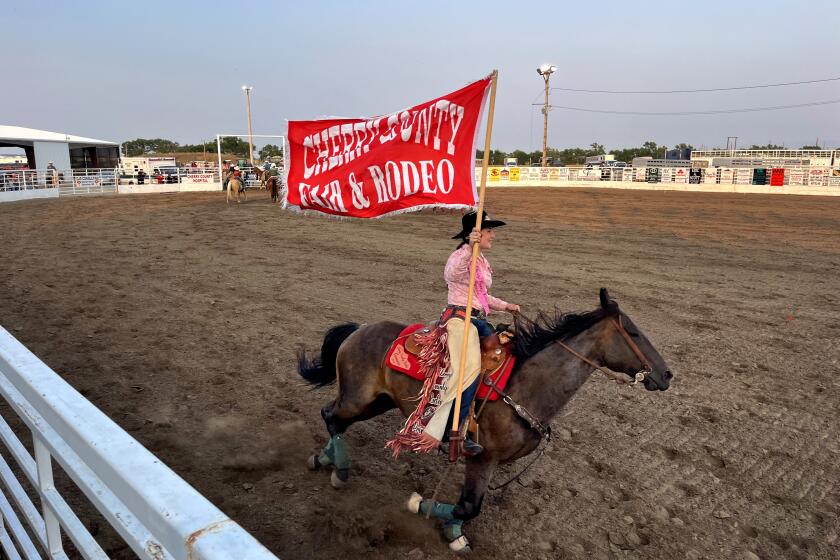
In Tim Walz’s rural hometown, his Democratic politics are an awkward fit
Tim Walz speaks of his Nebraska hometown with affection and pride. Will his small town roots appeal to rural voters?
Aug. 15, 2024
“When America asked you to lead your troops into War, you turned your back on your troops,” it says. “You have violated the trust of our brothers and sisters in arms. ... Until you admit you lied to them, there is no way you can be trusted to serve as Vice President.”
The letter also highlights Walz’s characterization of his military rank, which critics say he exaggerated.
The Minnesota governor achieved the rank of command sergeant major, one of the Army’s highest enlisted ranks, but retired as a master sergeant because he did not complete the required coursework required to keep the higher title. His governor’s biography website calls him “Command Sergeant Major Walz,” and his and Vice President Kamala Harris’ campaign site note that he rose to that rank.
The letter writers include Rep. Darrell Issa, who represents portions of San Diego and Riverside counties; Iowa Sen. Joni Ernst, Florida Sen. Rick Scott, and Montana Rep. Ryan Zinke, who served as secretary of the Interior under Trump.
On Wednesday evening, the Harris campaign, in an email to The Times, shared a statement by VoteVets, a progressive political action committee composed of military veterans and their families, claiming many of the signatories misrepresented their own service.
“If you’re looking for a textbook example of Stolen Valor, look no further than Donald Trump’s campaign and the 50 Veterans who signed this letter,” the statement reads.
The “most egregious example,” it reads, is Texas Congressman Ronny Jackson, whose U.S. Navy retirement rank was reduced from rear admiral to captain after a Pentagon investigation found he had behaved inappropriately while serving as White House physician.
“Despite the demotion, Jackson has continued to refer to himself as a retired rear admiral, including in statements released since the Navy reclassified him as a retired captain,” the Washington Post reported.
Vance, who has repeatedly accused Walz of “stolen valor,” repeated his attacks in a speech this week in a Philadelphia in which he joked, “Before the end of the campaign, Tim Walz is going to be talking about how he was carrying an M16 through the jungles of Vietnam.”
“The closest Tim Walz has ever come to combat ... is when he let rioters burn Minneapolis to the ground” after the police murder of George Floyd, said Vance, who was deployed to Iraq for six months in 2005 and did not see combat.
Walz addressed the scrutiny of his service during a speech to union workers in Los Angeles last week.
“I am damn proud of my service to this country,” Walz said, “and I firmly believe that you should never denigrate another person’s service record. For anyone who put on that uniform for our great country, including my opponent, I just have a few simple words: Thank you for your service and sacrifice.”
The military service of the vice presidential candidates — as well as Trump’s lack of it — has been a frequent theme during the Democratic National Convention in Chicago this week.

World & Nation
Will the attacks on Walz’s military service stick like they did to Kerry 20 years ago?
Some Democrats worry Republicans might turn Tim Walz’s military service into a liability. Others say Republicans are trying to “swift boat” Walz.
Aug. 13, 2024
Trump never served in the military, and a string of deferments enabled him to avoid the draft during the Vietnam War. After graduating high school from the New York Military Academy in 1964, he received four education deferments to attend college.
In 1968, at age 22, he got a medical deferment for having bone spurs in his heels.
In a speech at the Democratic convention Tuesday night, Sen. Tammy Duckworth of Illinois, an Army veteran who lost both her legs while serving in Iraq, called Trump “old Cadet Bone Spurs.”
“I went to war to protect America’s rights and freedoms, so I take it personally when a five-time draft dodging coward like Donald Trump tries to take away my rights and freedoms in return,” Duckworth said.
Trump in recent days has been criticized for saying the Presidential Medal of Freedom, the nation’s highest civilian honor, is “ much better” than the Medal of Honor, the nation’s highest military decoration, because the recipients of the latter are “either in very bad shape because they’ve been hit so many times by bullets or they’re dead.”
More to Read

Column: The night Coach Walz overshadowed Oprah, Stevie Wonder and other celebrities
Aug. 22, 2024

‘Coach’ Tim Walz rallies team at DNC, accepts nomination as vice president
Aug. 21, 2024

Trump is either delusional or confused. He’s unfit for the White House either way
Get the L.A. Times Politics newsletter
Deeply reported insights into legislation, politics and policy from Sacramento, Washington and beyond. In your inbox three times per week.
You may occasionally receive promotional content from the Los Angeles Times.

Hailey Branson-Potts is an enterprise reporter on the State Team who joined the Los Angeles Times in 2011. She reports on a wide range of issues and people, with a special focus on Northern California and the Central Coast. She grew up in the small town of Perry, Okla., and graduated from the University of Oklahoma.
More From the Los Angeles Times

5 Secret Service agents placed on modified duty after Trump assassination attempt, official says
Aug. 24, 2024
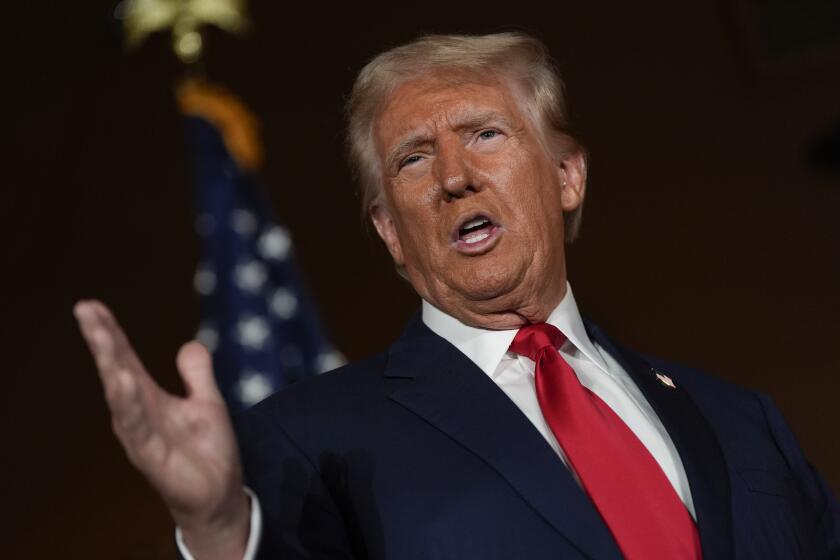
Column: Donald Trump’s Terrible, Horrible, No Good, Very Bad Convention Week

Hollywood Inc.
DNC ratings thump Trump as 29 million TV viewers watch Harris’ acceptance speech
Aug. 23, 2024

Hollywood showed up in force for Kamala Harris at DNC, even if Beyoncé and Taylor were absent
ChatGPT cover letter hack — 7 prompts to make your job application stand out
Struggling with cover letters? Here's how ChatGPT can help you land that job interview

Crafting a compelling cover letter in today's competitive job market can be daunting. Enter ChatGPT , the popular AI language model that's revolutionizing how we approach writing tasks. While many know how to use ChatGPT to help you write a resume , its potential for creating standout cover letters is equally impressive. By harnessing AI's language processing capabilities, you can refine your writing, tailor your message, and effectively highlight your key qualifications. But ChatGPT's usefulness doesn't stop there. Did you know it can also analyze PDFs for free —making industry research so much easier. And to streamline the job application process, you can even connect Google Drive to ChatGPT for easy document access. This guide will show you how to leverage ChatGPT to create impressive cover letters while maintaining your authentic voice. Remember, AI is here to enhance not to replace your personal touch. Let's dive in and discover how to make ChatGPT your secret weapon in landing your dream job!
1. Analyze the job description

Log in or sign up to ChatGPT . Begin by pasting the job description into the prompt box and asking it to identify key skills, qualifications, and responsibilities. This analysis will help you understand exactly what the employer is looking for in an ideal candidate.
You can use a prompt like: Analyze this job description and list the top 5 skills and qualifications the employer is seeking . Then , hit Enter.
2. Outline your cover letter

Once you have a clear understanding of the job requirements, ask ChatGPT to create a basic outline for your cover letter based on the job description analysis . This will provide a structure for your letter and ensure you address all the key points.
Try using a prompt such as: Create an outline for a cover letter addressing these top 5 skills and qualifications.
3. Craft your opening paragraph
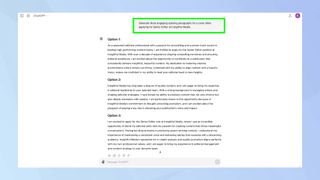
Use ChatGPT to generate ideas for an attention-grabbing opening paragraph that expresses your enthusiasm for the position. This is your chance to make a strong first impression, so consider asking for multiple options.
You might use a prompt like: Generate three engaging opening paragraphs for a cover letter applying for [job title] at [company name] .
4. Highlight your relevant experience
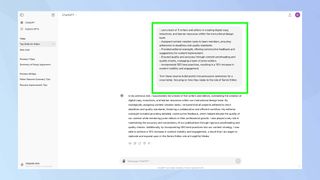
Provide ChatGPT with bullet points from your resume. Then, ask it to transform them into compelling sentences that align with the job requirements . This step helps you tailor your experience to the specific role. A useful prompt could be: Turn these resume bullet points into persuasive sentences for a cover letter, focusing on how they relate to [specific job requirements].
5. Create a strong closing
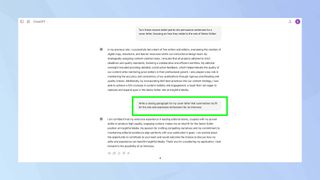
Ask ChatGPT to suggest impactful closing paragraphs that reiterate your interest and qualifications. A strong closing can leave a lasting impression on your prospective employer.
Try a prompt like: Write a closing paragraph for my cover letter that summarizes my fit for the role and expresses enthusiasm for an interview.
6. Refine and personalize
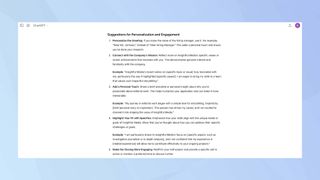
Ask ChatGPT to combine all the elements to create your cover letter. Then use it to help you fine-tune your language and add a personal touch to the cover letter. This step ensures your letter doesn't sound generic or AI-generated.
A good prompt for this could be: Review the cover letter generated and suggest ways to make it more personalized and engaging. If you're happy with the suggestions, ask ChatGPT to apply them.
7. Proofread and edit
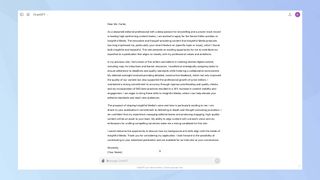
Finally, ask ChatGPT to proofread your cover letter and suggest any improvements in grammar, style, or clarity. While ChatGPT is excellent at catching errors, always review its suggestions yourself.
You can use a prompt like: Please proofread the cover letter and suggest any improvements in grammar, style, or clarity. Once you're happy with the cover letter letter, copy and paste into a document to send. Happy job hunting!
So that's it! If you're curious about what else is happening in AI right now, OpenAI has knocked Gemini off the top of chatbot leaderboard with its new model, thanks to some rapid advancements. These include extending beyond text, as evidenced by recent experiences with voice AI. Read what happened when our AI editor spent the weekend with GPT-4o Advanced Voice . Finally, big things are undoubtedly coming, with news from OpenAI that ChatGPT got a secret upgrade , so make sure you check Tom's Guide regularly for the best guides on how to utilize AI to help with your everyday tasks.
Sign up to get the BEST of Tom's Guide direct to your inbox.
Get instant access to breaking news, the hottest reviews, great deals and helpful tips.
Kaycee is an Editor at Tom’s Guide and has been writing for as long as she can remember. Her journey into the tech world began as Cazoo's Knowledge Content Specialist, igniting her enthusiasm for technology. When she’s not exploring the latest gadgets and innovations, Kaycee can be found immersed in her favorite video games, or penning her second poetry collection.
Alien: Romulus inspired me to play an Alien-themed tabletop game, and this AI tool makes it super easy
Midjourney expands web access — offering 25 free AI-generated images for all users
I review Macs for a living, and I install these 5 apps first on every MacBook
Most Popular
- 2 7 things you should know before buying a dehumidifier
- 3 How to make homemade bug repellent — 3 spray recipes to keep your yard pest-free
- 4 Terra Kaffe TK-02 smart coffee machine review: Complex flavors simplified
- 5 Forget Labor Day — here's 33 epic Best Buy sales I’d buy this weekend
- Share full article
Advertisement
Supported by
Tiny Memoir Contest for Students: Write a 100-Word Personal Narrative
We invite teenagers to tell a true story about a meaningful life experience in just 100 words. Contest dates: Nov. 6 to Dec. 4, 2024.

By The Learning Network
Illustrations from Modern Love’s Tiny Love Stories , the inspiration for this contest.
Can you tell a meaningful and interesting true story from your life in just 100 words? That’s the challenge we pose to teenagers with our 100-Word Personal Narrative Contest, a storytelling form popularized by Modern Love’s Tiny Love Stories series .
After running this contest for two years, receiving a total of more than 25,000 entries, and honoring dozens of excellent miniature teen-written memoirs, we have discovered the answer is a resounding yes .
So, we challenge you to try it yourself.
We’re not asking you to write to a particular theme or to use a specific structure or style, but we are looking for short, powerful stories about a particular moment or event in your life. We want to hear your story, told in your unique voice, and we hope you’ll experiment with style and form to tell a tale that matters to you, in a way you enjoy telling it.
And, yes, it’s possible to do all that in only 100 words. For proof, just look at last year’s 15 winning entries . We also have a step-by-step guide full of advice that is grounded in 25 excellent 100-word mentor texts, as well as a rehearsal space , published for our first year’s contest, that has over 1,000 student-written mini memoirs. Because that space was so successful, we’re keeping it open for this year’s contest. We hope students will use it to get inspiration, experiment and encourage each other.
Take a look at the full guidelines and related resources below. Please post any questions you have in the comments and we’ll answer you there, or write to us at [email protected]. And, consider hanging this PDF one-page announcement on your class bulletin board.
Here’s what you need to know:
- Resources for Teachers and Students
- Frequently Asked Questions
- Submission Form
We are having trouble retrieving the article content.
Please enable JavaScript in your browser settings.
Thank you for your patience while we verify access. If you are in Reader mode please exit and log into your Times account, or subscribe for all of The Times.
Thank you for your patience while we verify access.
Already a subscriber? Log in .
Want all of The Times? Subscribe .

IMAGES
COMMENTS
Essay Letter Writing: Essay letter writing is a form of written communication that combines the structure and format of an essay with the personal tone and conversational style of a letter. This type of school letter writing can be used to express personal thoughts and opinions on a variety of topics, from social issues to academic assignments.
Learn tips for how to structure and go through the process of writing an essay that'll wow, whether a persuasive essay, college admissions essay, or thesis.
Learn how to find an essay topic, structure your college essay, and how to write and revise a college essay all in our best essay writing guide.
Essay Writing This resource begins with a general description of essay writing and moves to a discussion of common essay genres students may encounter across the curriculum. The four genres of essays (description, narration, exposition, and argumentation) are common paper assignments you may encounter in your writing classes.
Speed up the letter-writing process. Grammarly's AI letter generator helps you create drafts for personal and business letters in two quick steps.
Knowing how to write an essay can help you out significantly in both, your academic and professional life. An essay is a highly versatile nonfiction piece of writing that not only tests your knowledge of a topic but also your literary and argumentative skills.
Learn the art of letter writing with tips, examples and videos. Explore the types, formats and styles of formal and informal letters.
College Essay Guy - Personal statement and college essay tips, guides, resources, consulting, and webinars for students, parents and counselors.
The structure of a traditional essay is also specific, but quite different from a letter. Essays begin with a headline, include a thesis statement, have multiple paragraphs with topic sentences that relate back to and further explain the thesis of the essay, and a concluding paragraph that sums up the body's points come at the end.
Edwina Preston pays tribute to the humble letter: from literary love letters to philosophical lessons to cherished family heirlooms. Letters impart lessons, reveal character - and are a form of art.
The Beginner's Guide to Writing an Essay | Steps & Examples An academic essay is a focused piece of writing that develops an idea or argument using evidence, analysis, and interpretation.
Need help writing an essay? Our essay guide has you covered! Discover resources and tools designed to help you write essays that make the grade.
General Training Writing Task 1 - Letter. The IELTS General Training Writing Task 1 asks you to write a letter of a minimum of 150 words in response to some situation or a problem. The task will probably ask you to complain about something, to request information, ask for help, to make arrangements and/or explain a situation.
Writing Support for Instructors Schedule an appointment Tutoring Writing Resources expand_more Meet the staff Contact/Employment Home chevron_right Writing Resources chevron_right Strategies for Essay Writing chevron_right Strategies for Essay Writing: Downloadable PDFs
How to write a letter. Formal, and Informal letters included. Planning tools, video tutorials, writing prompts, and teaching ideas for English teachers, students, and parents.
How to Write a College Essay | A Complete Guide & Examples The college essay can make or break your application. It's your chance to provide personal context, communicate your values and qualities, and set yourself apart from other students.
Letter writing is a timeless form of communication that has evolved but remains an essential skill for personal, professional, and formal exchanges. Let's explore what letter writing is, the different types of letters, and provide examples for each.
Here are the general steps on writing an essay cover letter together with example scripts: 1. Write the accurate inside address. Every cover letter must start with the inside address — the information as to whom and to where the letter is addressed.
Writing an essay is a critical part of the application process. Use these tips to write an essay for college admission that could earn you an acceptance letter.
August 22, 2024 at 6:01 pm PDT. Doctors at Oregon Health & Science University have begun a letter-writing campaign urging Gov. Tina Kotek to oppose any continued service by OHSU board chair Wayne ...
Improve your English writing with our free writing lessons. Learn techniques to help with essays, emails, Cambridge & IELTS Writing and more!
Essays are traditionally categorized as formal and creative. However, you can write brief reports and even essays, assuming they meet the standards for a formal essay. The first step toward writing essays is to compose a paragraph article. Paragraph essays are divided into two parts: the introduction and the body corretor de texto gratuito of ...
of the Academic Essay Gordon Harvey's "Elements of the Academic Essay" provide a possible vocabulary for commenting on student writing. Instructors in Harvard College Writing Program tend to use some version of this vocabulary when talking about and commenting on student writing, so it's likely
Dylan isn't the only one of his classmates concerned about the garden's imminent demise. For the 575 or so students who attend P.S. 130, Elizabeth Street Garden serves as an extension of the ...
One of the main things we learn in English Grammar is writing essays, letters, stories etc. This helps us develop our language while exploring our creative sides. Let us learn more about the formats and tips for writing.
DeWyze's sixth studio album, Gone For Days, which is out on Sept. 13, is the result of and a love letter to the two months he spent writing, recording, and living in Bristol.
Learn everything you need to know about writing a letter, from tips on what to include and how to structure it to examples of strong letter writing.
The letter is part of a sustained attack by the Trump campaign — spearheaded by Sen. JD Vance, the vice presidential nominee and a Marine Corps veteran — on the military service record of Walz ...
Try a prompt like: Write a closing paragraph for my cover letter that summarizes my fit for the role and expresses enthusiasm for an interview. 6. Refine and personalize
A personal narrative writing unit: This unit includes mentor texts, writing prompts, lesson plans, videos and on-demand webinars that teach the skills essential for any kind of narrative writing ...